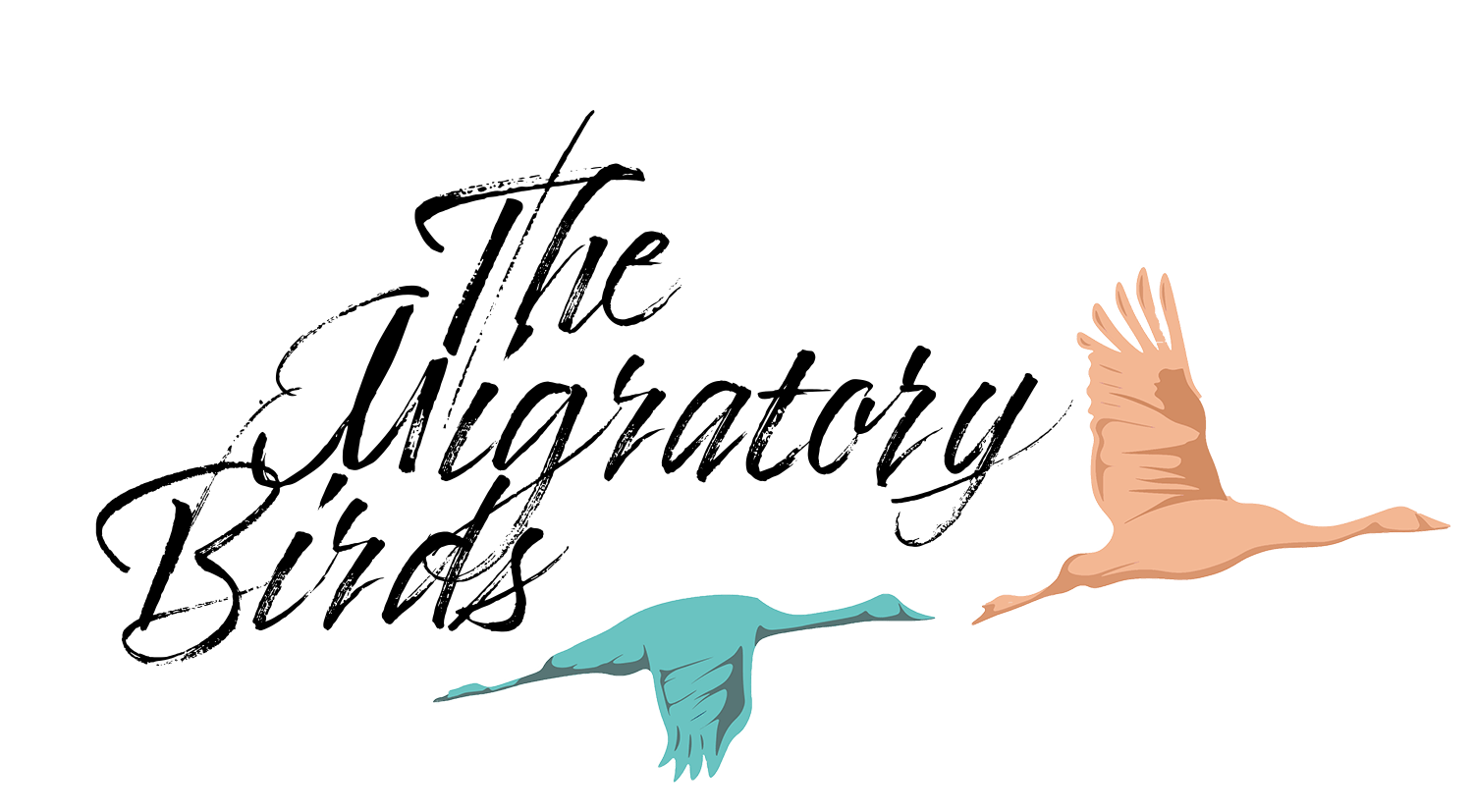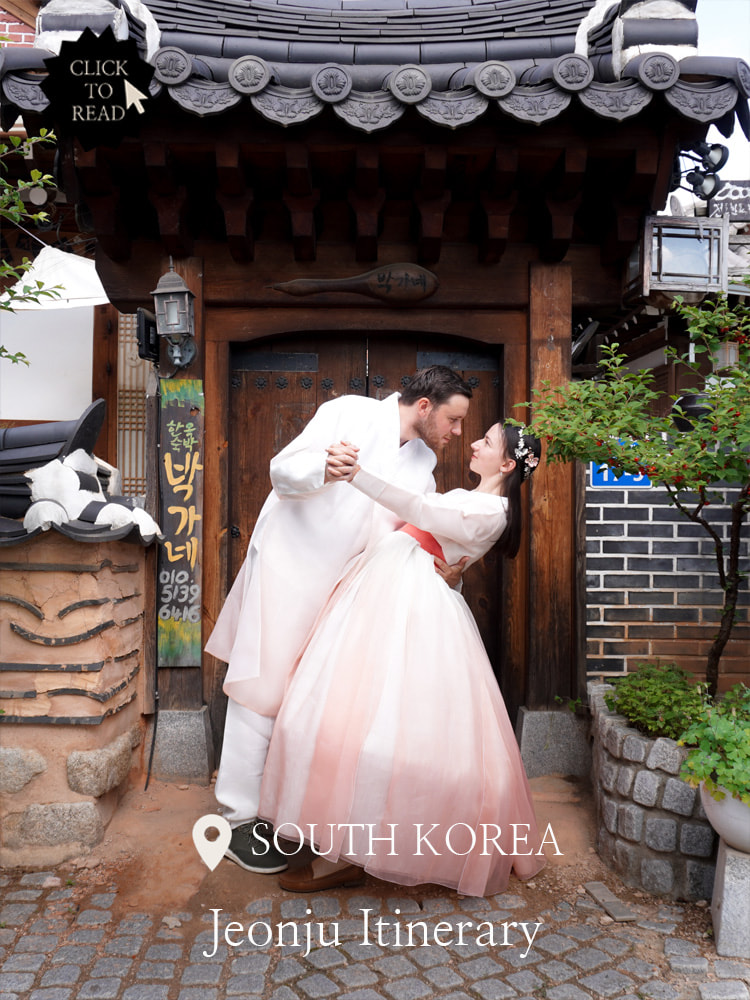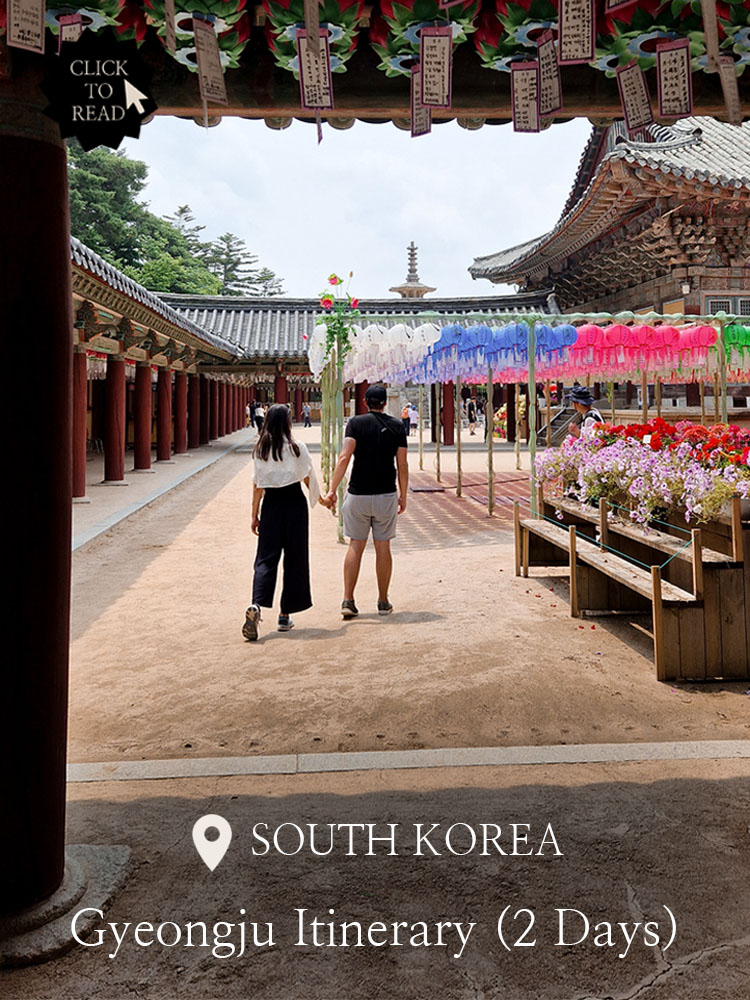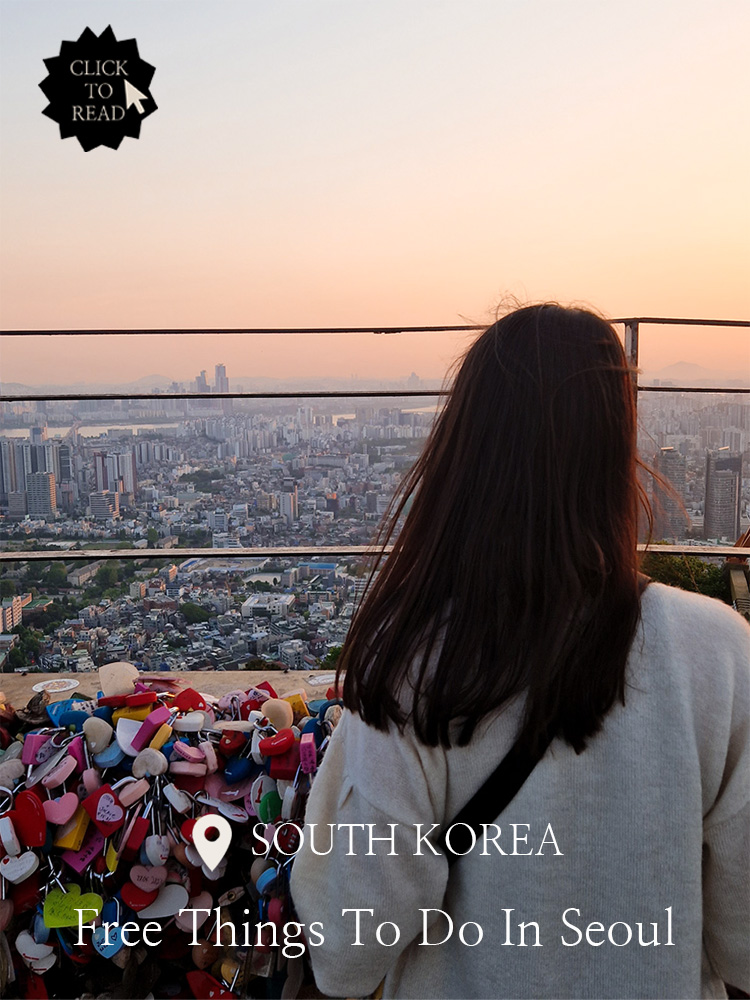Know this when travelling to Seoul for the first time – Complete Travel Guide to Seoul
When travelling to South Korea, chances are high that Seoul is going to be your very first stop. More than that, Seoul is probably going to be quite a substantial part of your trip. Both from a sightseeing as well as a travel-planning point of view.
In this complete travel guide to Seoul, we share everything you need to know before setting foot into Seoul for the very first time! Find out how to unlock this potentially overwhelming, but essentially quite marvellous city, in order to have the very best trip possible!
Note: This post may contain affiliate links. By interacting with these links, you can support us and our website at no extra cost to you🍀! Our affiliate links are marked by an *, so you can recognise them in advance. For more information, read our Disclaimer.
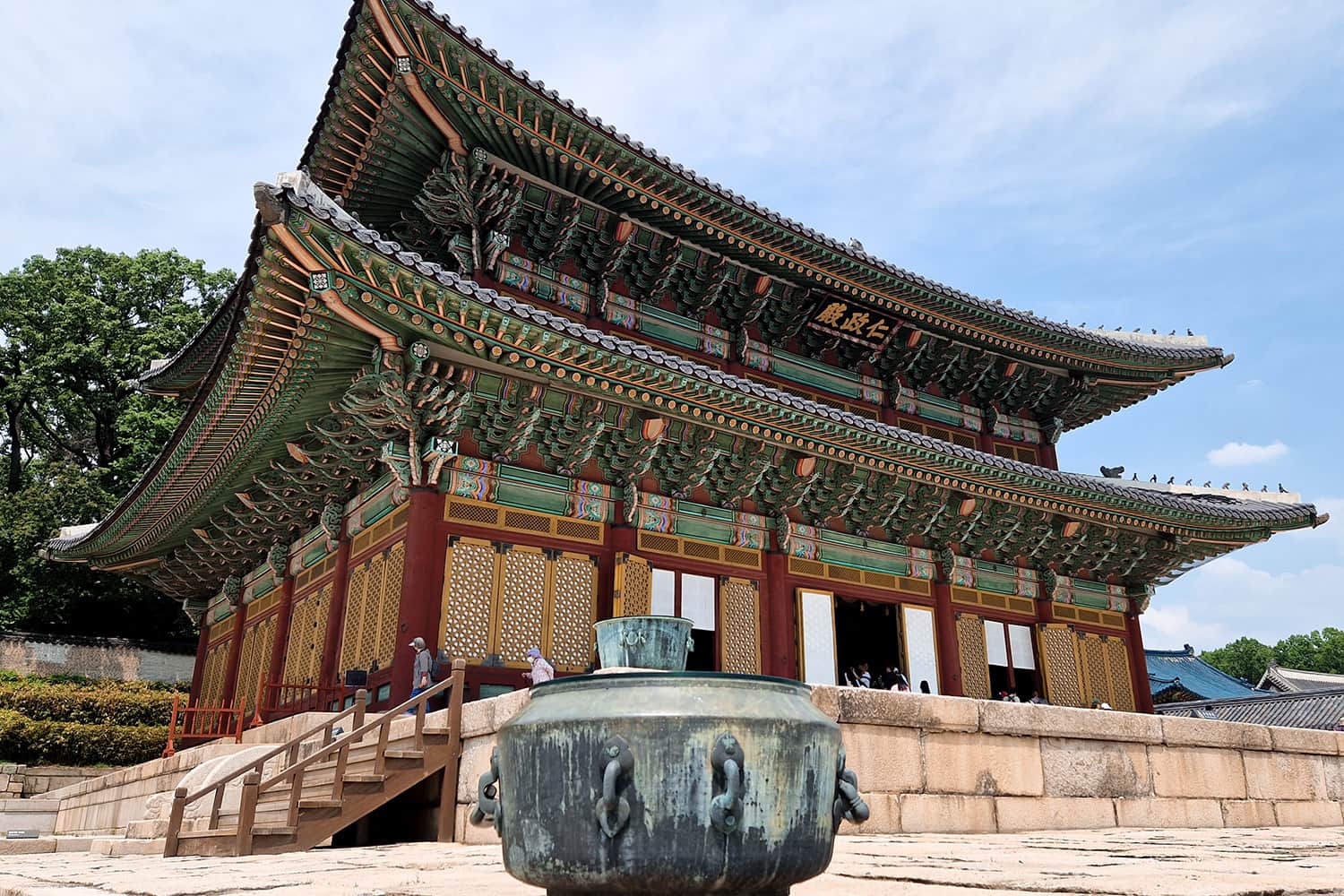
A Complete Travel Guide to Seoul, South Korea
Seoul is among the biggest cities in the world and a gigantic hub that not only connects South Korea to the outside world, but also a lot of destinations within South Korea! Which is why we think the key to having a smooth trip to South Korea lies in understanding and navigating Seoul as best as possible.
Seoul can be quite an overwhelming city, especially if this is your first time in South Korea and you need to navigate it potentially while having quite the jet lag. At least that is what our first experience of Seoul looked like😆.
In this Seoul Travel guide we share our best insider tips for travelling Seoul and aim to give you all the tools and information you may need to navigate this city and have a successful trip – not only to Seoul, but South Korea in general!

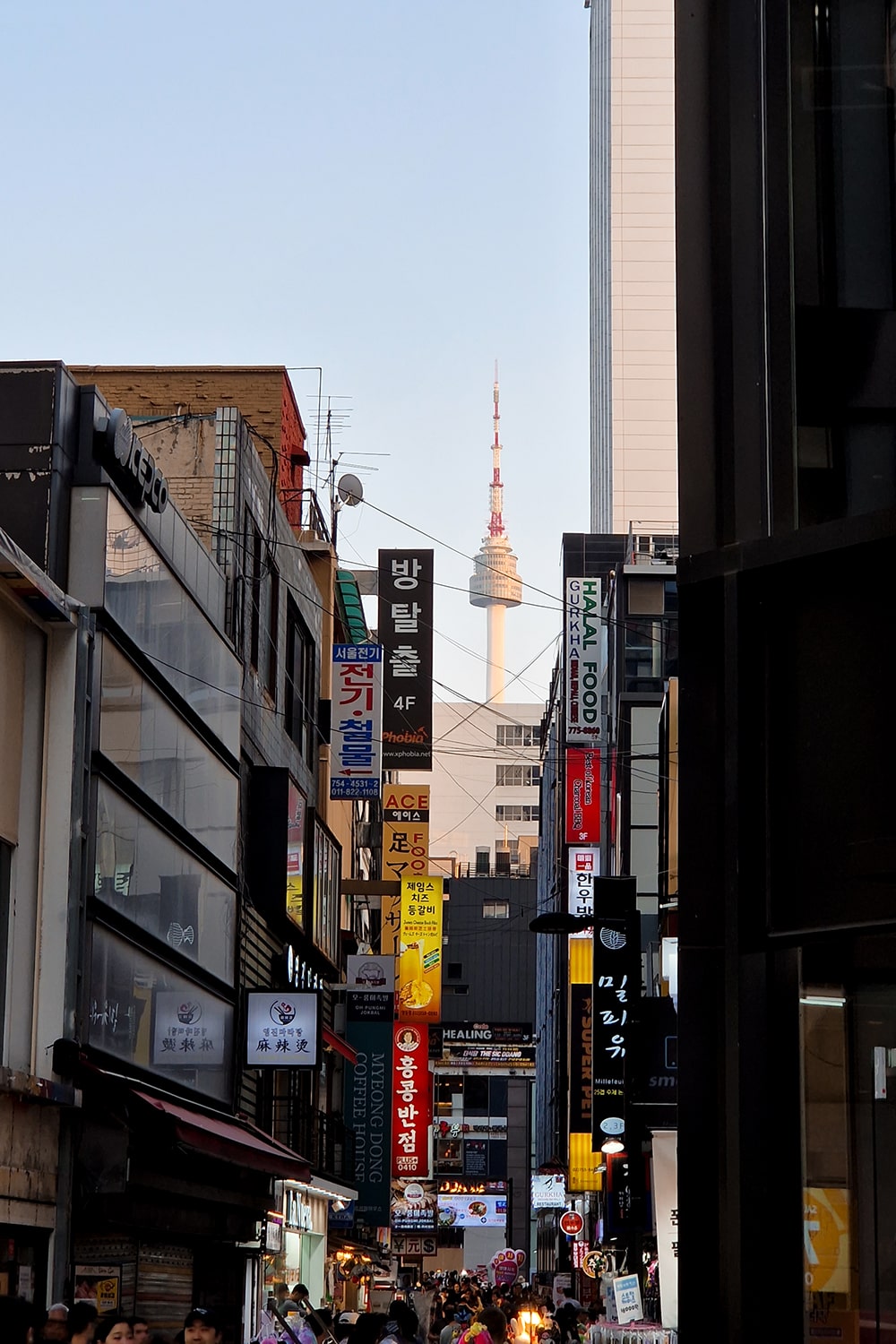
Note: Since this is going to be a chunky one, we wanted to remind you that you can use the Go To button at the top left corner of your display to easily navigate to the most relevant sections for you!
Getting to Seoul – What are your options?
Let’s start at the very beginning: Getting to Seoul. As we mentioned a few times in our South Korea guides, South Korea can essentially be considered an island in terms of possible ways to get there. If you are travelling to Seoul from outside of South Korea, be it from further overseas or a more close-by country, there is actually only one option: You will have to fly to Seoul.
Seoul’s Airports: Incheon vs. Gimpo Airport
Seoul is home to two airports: Incheon International Airport (ICN) and Gimpo International Airport (GMP). So, what’s the difference and which one should you fly to?
✈️ Incheon International Airport (ICN)
- Let’s start with Incheon International Airport. The latter is located on an artificial stretch of land right off the coast in front of the South Korean city of Incheon.
- As such the airport is located roughly an hour by train outside of Seoul.
- Nonetheless, Incheon Airport is considered the ‘main’ airport of Seoul, especially when it comes to international travel.
- It is the newer and bigger airport of the two.
- And, if you are travelling to South Korea from further overseas, you will be landing and departing from Incheon International Airport.
✈️ Gimpo International Airport (GMP)
- While Gimpo Airport also hosts a few international flights (mainly to close-by destinations such as mainland China, Japan and Taiwan), most of the flights landing and departing Gimpo Airport are domestic flights either bound for Jeju or Busan.
- The advantage of Gimpo Airport over Incheon International Airport lies in its location. Gimpo Airport is located way closer to Seoul and can therefore be reached by train in about 22 minutes as well as by Seoul’s Metro.
- However, again, international flight connections are quite limited.
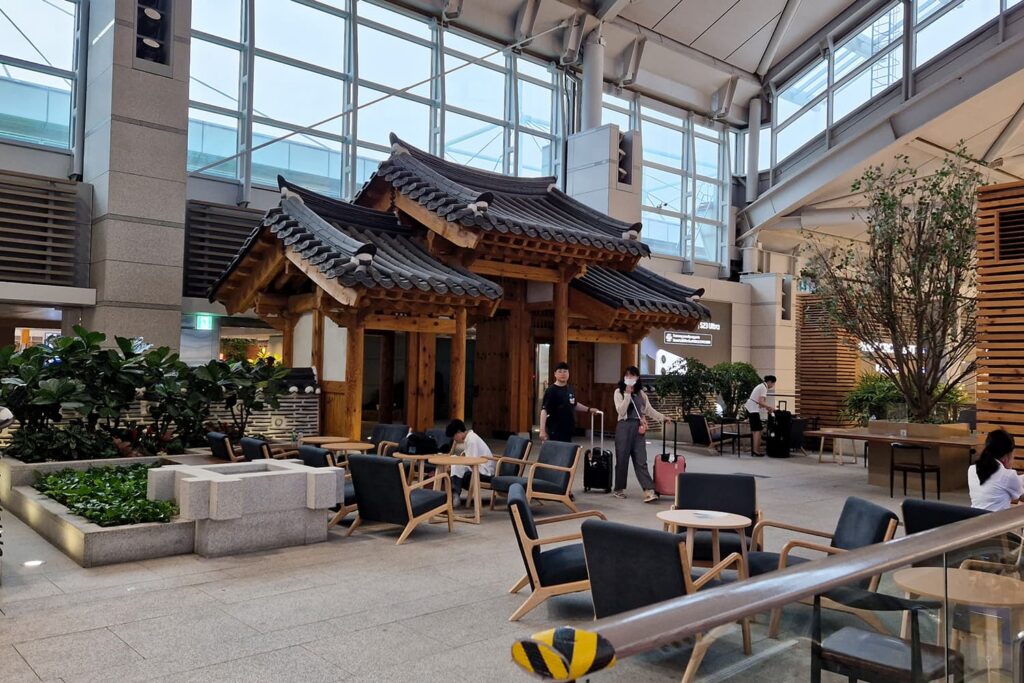

Best way to get to Seoul City Centre from the Airport
No matter what airport you are landing at – respectively departing from -, transfers between Seoul and its airports are quite straightforward.
Gimpo Airport ↔️ Seoul
Since Gimpo Airport is located in the vicinity of Seoul, it can be reached in a number of ways. Thereof, the most prominent ones for tourists are:
- The AREX (Airport Railway Express Train). Do note, only the AREX All-Stop Train stops at Gimpo Airport, NOT the Express Train! Travel time is ~22 minutes between Seoul Station and Gimpo Airport. Fares cost ~1.600 KRW (~1€/USD).
- Seoul Metro Line 5. The best choice if you stay near Gwanghwamun or Insadong. You can travel without transfer between e.g. Gwanghwamun or Jongno-3 Metro Station and Gimpo Airport in ~41 minutes. Fares cost 1.700 KRW (~1€/USD).
- Seoul Metro Line 9. The best choice if you stay south of the Han river, e.g. near Gangnam. You can travel without transfer between e.g. Bongeunsa Station and Gimpo Airport in ~39 minutes. Fares cost ~1.800 KRW (~1€/USD).
All above mentioned transfer options between Seoul and Gimpo Airport can be paid by T-Money Card!
Note: In case you do not know what it is, read more about the T-Money Card in our South Korea Travel Checklist!
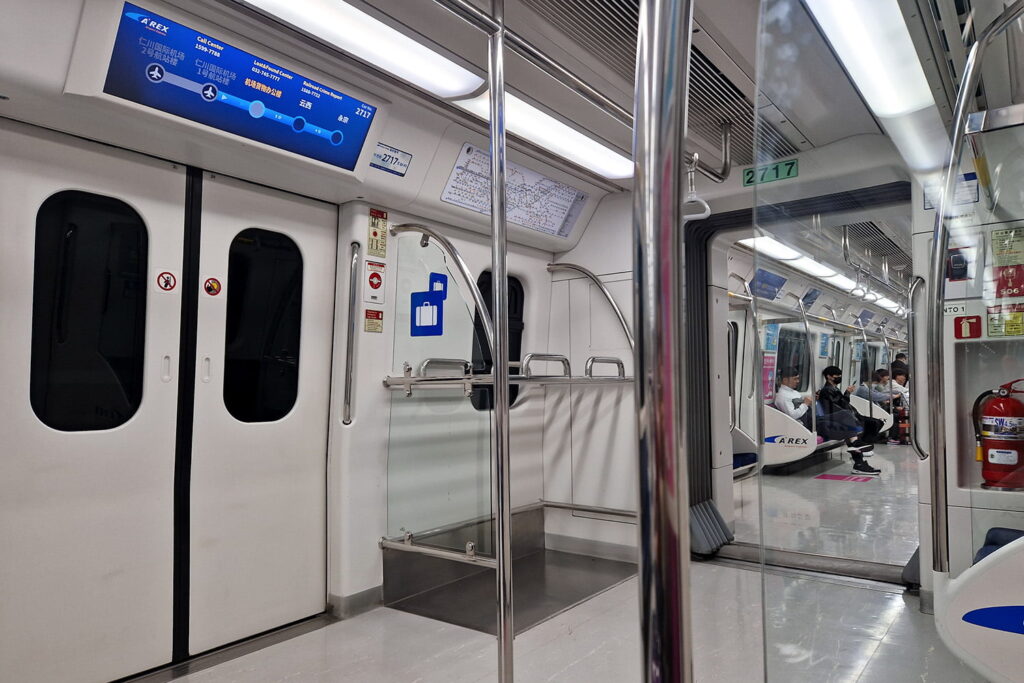
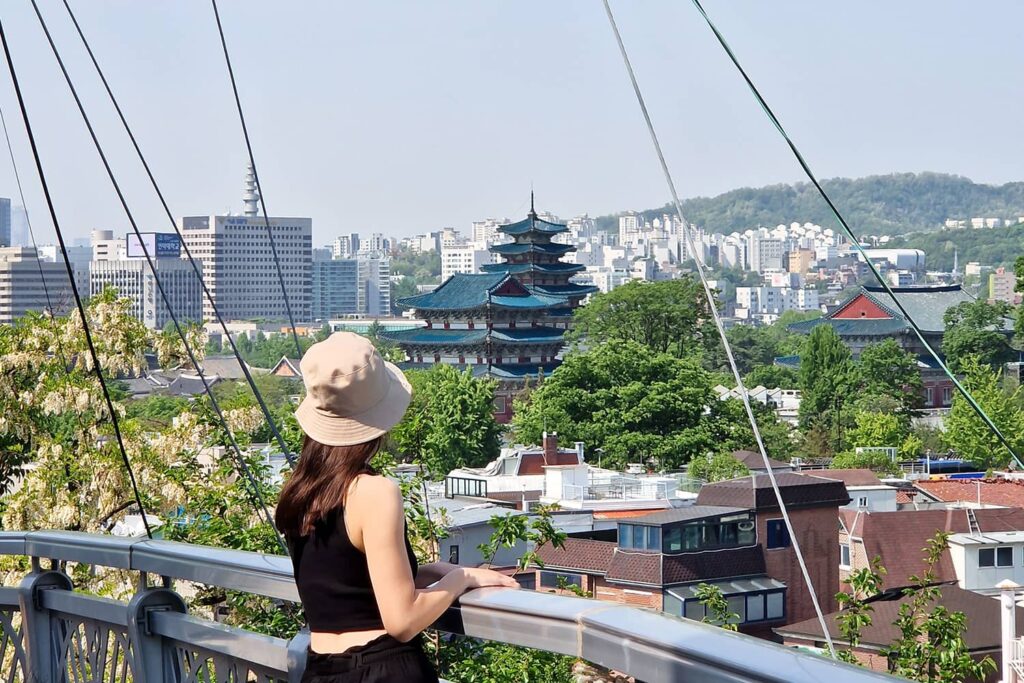
Incheon Airport ↔️ Seoul
If you are travelling between Incheon International Airport and Seoul your best option is probably the AREX Train. Do watch out, there are two versions of this train: the Express Train and the All-Stop Train.
- The AREX Express Train travels non-stop between Seoul Station and Incheon Airport. Travel Time: ~40 minutes. Price: 11.500 KRW (7,65€/ 7,95USD) if bought in advance via Klook*.
- The AREX All-Stop Train services a total of 11 stops (one of them Gimpo Airport) between Seoul Station and Incheon Airport Terminal 1. Travel Time: ~60 minutes. Price: ~4.450 KRW (~3€/USD).
Both trains stop at Incheon Airport Terminal 1 as well as Terminal 2.
The AREX Express Train requires a separate ticket (i.e. cannot be paid by T-Money Card). We would recommend buying the AREX ticket in advance via Klook*.
Why? Well, this saves you the hassle of queuing for a ticket after a long flight. You can simply activate your voucher via the Klook App before making your way to the AREX train. Klook provides quite detailed instructions on how to do so!
Important: DO THIS if you have an early flight out of Incheon Airport!
If you have an early flight out of Incheon Airport, there is one very important thing you need to consider! And that is the fact that Seoul’s public transport does not run through the night! It stops at 1 a.m. and doesn’t resume until 5:30 a.m.!
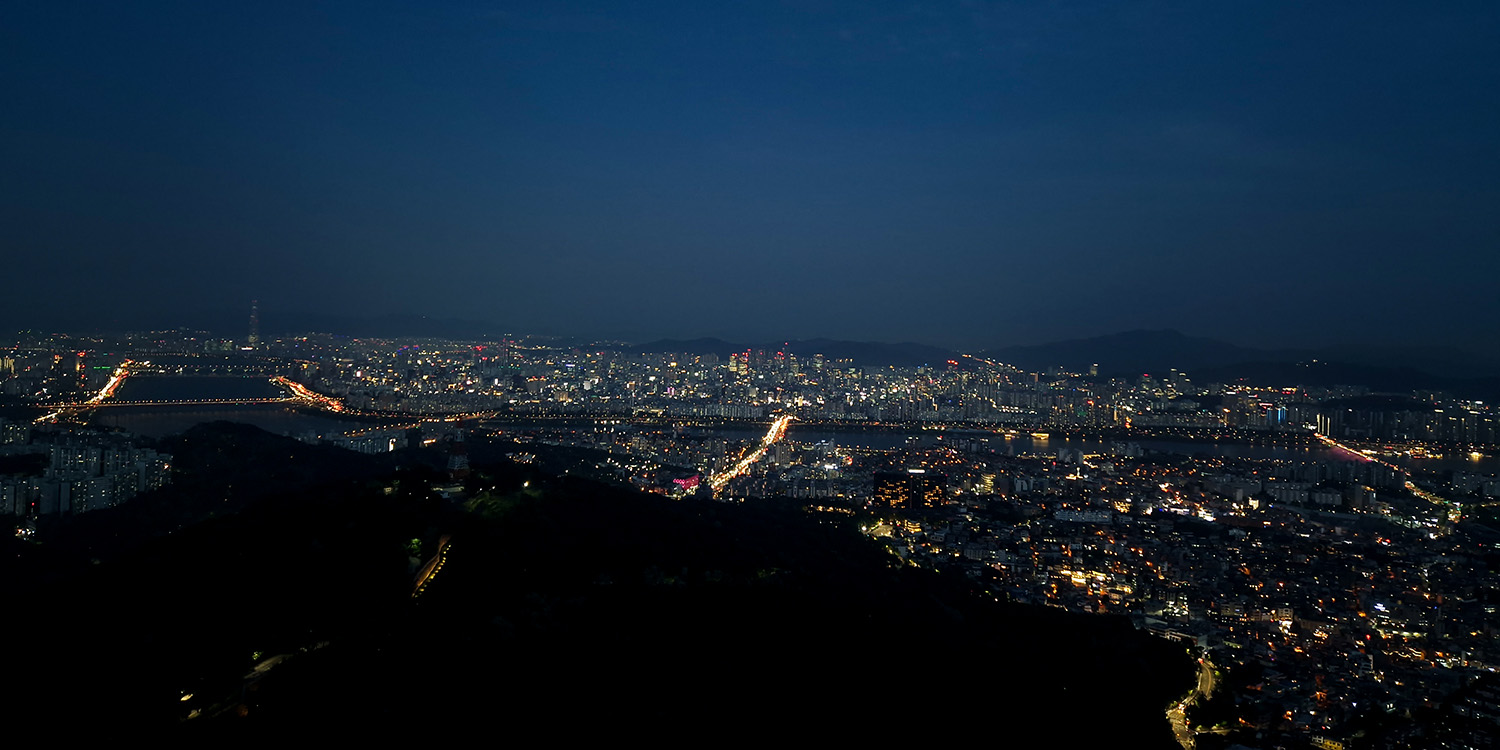
In other words, if you have a 6 a.m. flight, getting to the airport in time will be a hassle. We know, because we have been there😆. Additionally, Incheon Airport is awfully busy in the morning and getting through security may take a while, so it’s best to have some spare time before your flight. Now, what is our solution to this problem?
Stay at Incheon Airport’s Capsule Hotel!
We stumbled upon this capsule hotel by chance and the decision to stay here was a very last minute one. However, we are so glad we did! So, what is there to know about this Airport Capsule Hotel?
- The Capsule Hotel is called ‘Darakhyu’ and they have a branch inside Terminal 1 as well as Terminal 2 (both are landside not airside).
- While called capsules, the rooms are equipped with a normal bed as well as a shower and lavatory (depending on the room you select). Toilets are located in a common area for hotel guests, however there are many and when we visited they were super clean!
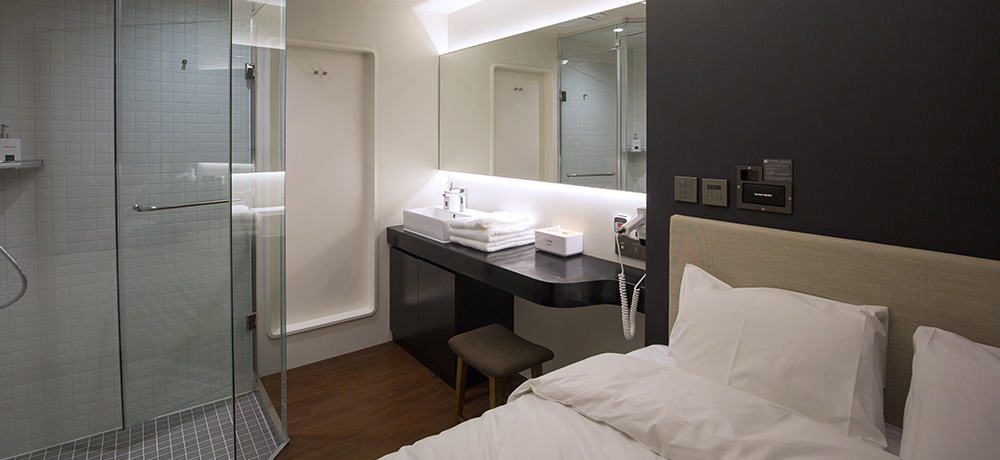

- A double room without shower costs 81.000KRW, a double room with shower 89.000KRW (~59€/62$) for overnight use. You can stay up to 12 hours when booking the overnight stay.
Reservations are best made via the Darakhyu Hotel Website. Do make sure to select the correct Airport Terminal when booking😉.
Note: If your flight isn’t until 7:30 a.m., you may consider one of the airport shuttle buses. Bus Nr. 6001 for instance starts running at 4:40 a.m. and travels from Seoul Station to Incheon Airport in ~1 hour for ~17.000 KRW (~11€/ 12USD). However, keep in mind that you will have to get to Seoul Station with no running public transport as well!
Where to stay in Seoul
When planning your stay, one of the most important questions to ask yourself is: Where is the best area to stay in Seoul? Seoul is quite an enormous city. And personally, we always find it a daunting task to decide where to stay in a city we have never been to before. If you are in the same boat, let us help you with that!
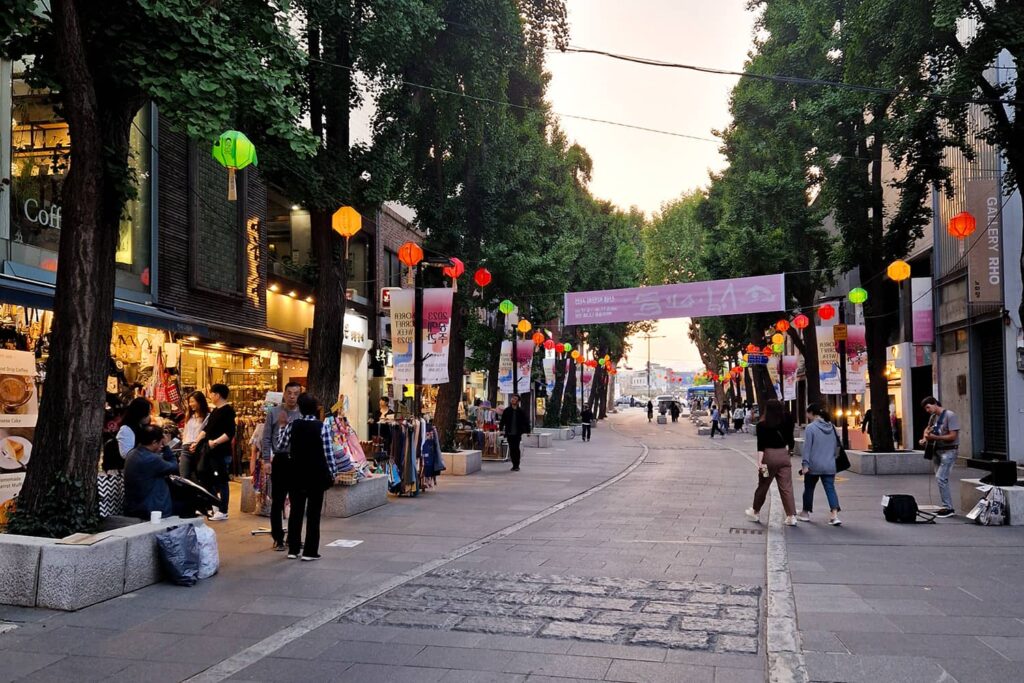
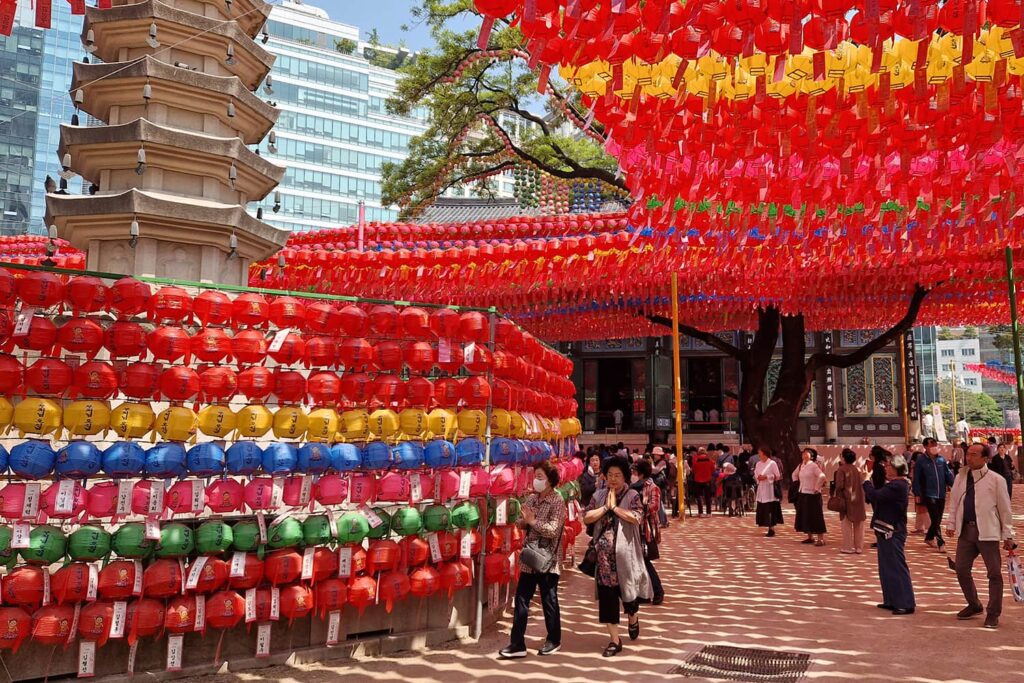
If this is your very first time in Seoul and you are visiting mainly to do sightseeing and explore Seoul’s main attractions, then we highly recommend staying near Insa-dong. Why?
- You are in walking distance to some of the best attractions: e.g. Bukchon Hanok Village, Ikseon-dong Hanok Village as well as Gyeongbokgung and Changdeokgung Palace (the best one in our opinion😉).
- You are in the vicinity of a number of metro stations. For instance, Jongno 3-ga Station connects to Seoul Metro Line 1, 3 and 5 and thus it is easy to get around Seoul from Insa-dong.
Our Recommendations for Insa-dong
🛏️ Insadong R Guesthouse* (Budget). Rooms are very basic, however the location is phenomenal and we had a very pleasant stay here! Ideal for budget travellers. Price: ~30-40€/$ per night.
🛏️ Urbanstay Boutique Ikseon* (Mid-range). Rooms are essentially small studios/apartments. Which is great if you want to feel like you actually live in Seoul for a few days😉. Price: ~100-120€/$ per night.
🛏️ Amid Hotel Seoul* (Mid-range). If you prefer a hotel, Amid Hotel might be the perfect fit for you. It is quite modern and located only 100 metres from Insa-dong Culture Street! Price: ~100-120€/$ per night.
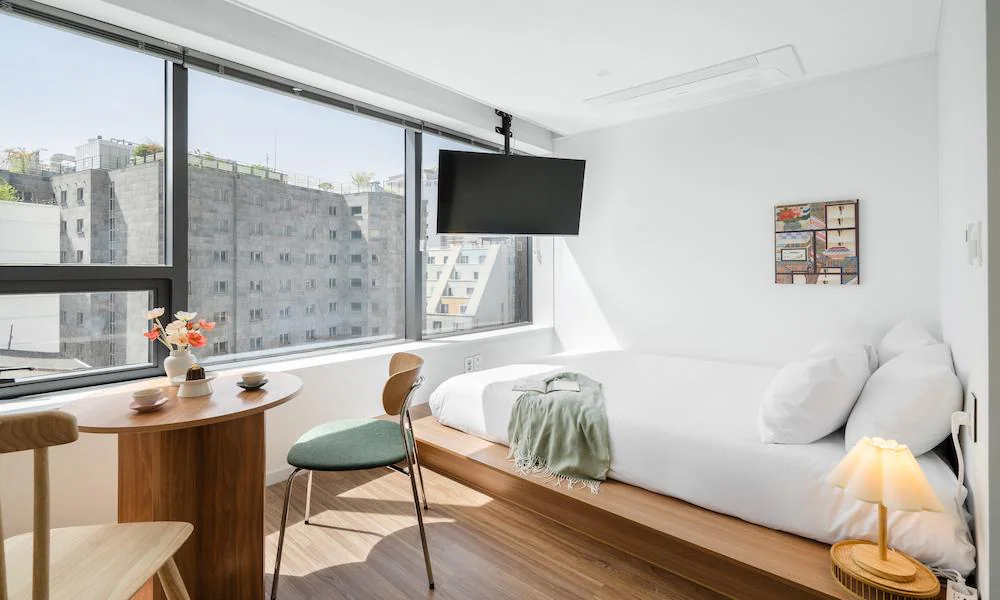
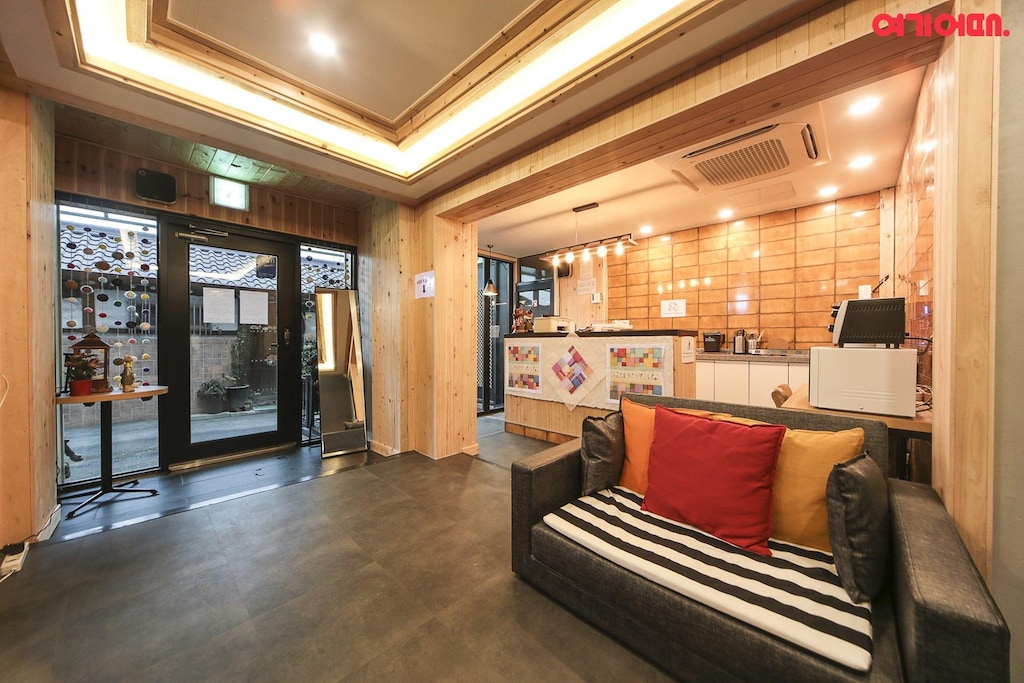
How to get around Seoul
Once you are in Seoul, getting around is pretty easy. Seoul is home to quite an extensive metro as well as bus system. Therefore, you will hardly find a location within the city that you cannot get to by public transport!
A map of the Seoul Metro System can be found on the Seoul Metropolitan Government Website. If you do not care for an overview map of Seoul’s Metro and solely wish to know how to get from one spot to the next, we highly recommend you download Naver Map. The latter is South Korea’s equivalent to Google Maps, since the navigation function of Google Maps is restricted in South Korea.
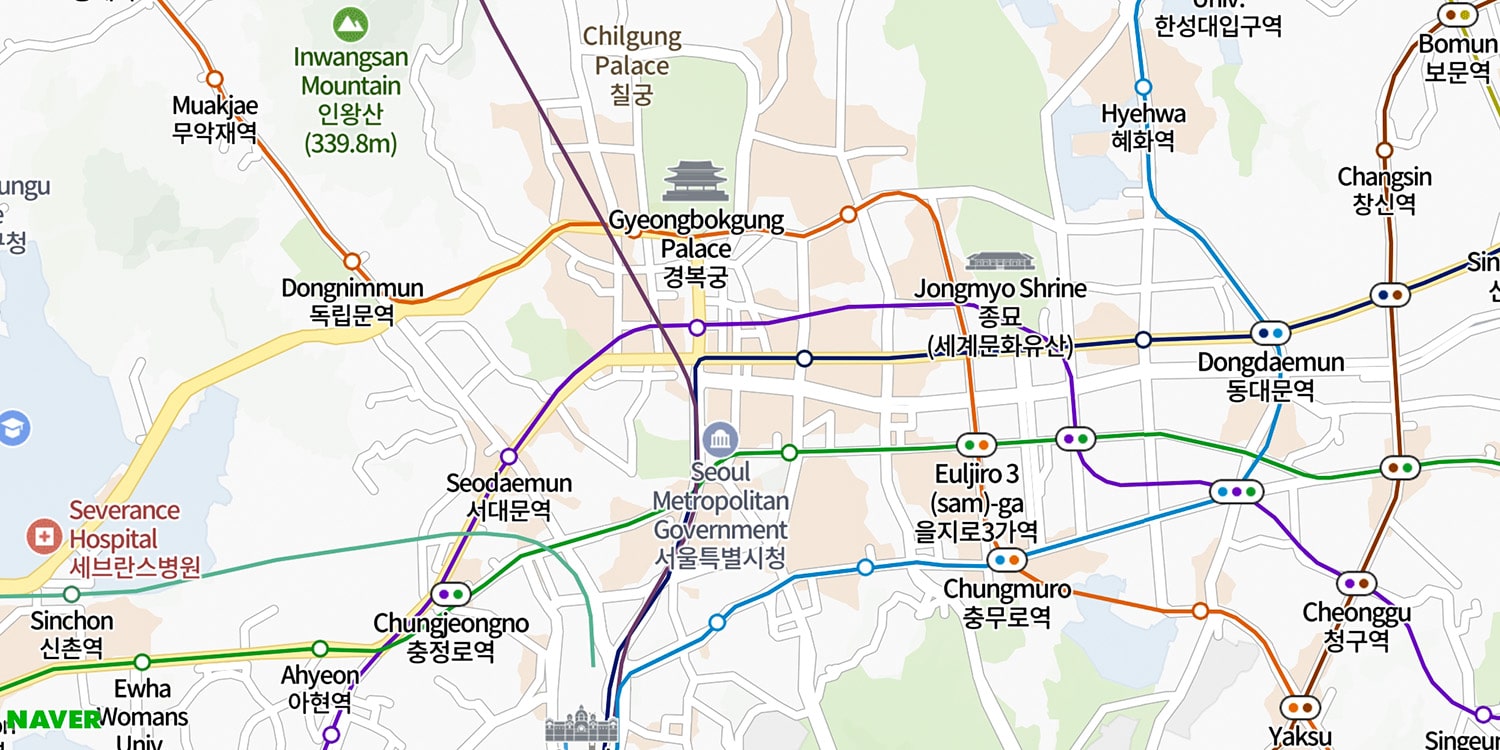
Read more about the best free apps that are indispensable for travelling South Korea:
Tip: Get a T-Money Card to pay for public transport
A common way to pay for public transport (i.e. local buses and the metro) in South Korea is by using a rechargeable card called the T-Money Card. The latter can be bought at any convenience store in South Korea.
Honestly, it is a very useful thing to have and we cannot recommend it enough!
For more information on the T-Money Card (i.e. price, applicability, etc.), head to our South Korea Travel Checklist, where we wrote a whole section about it:

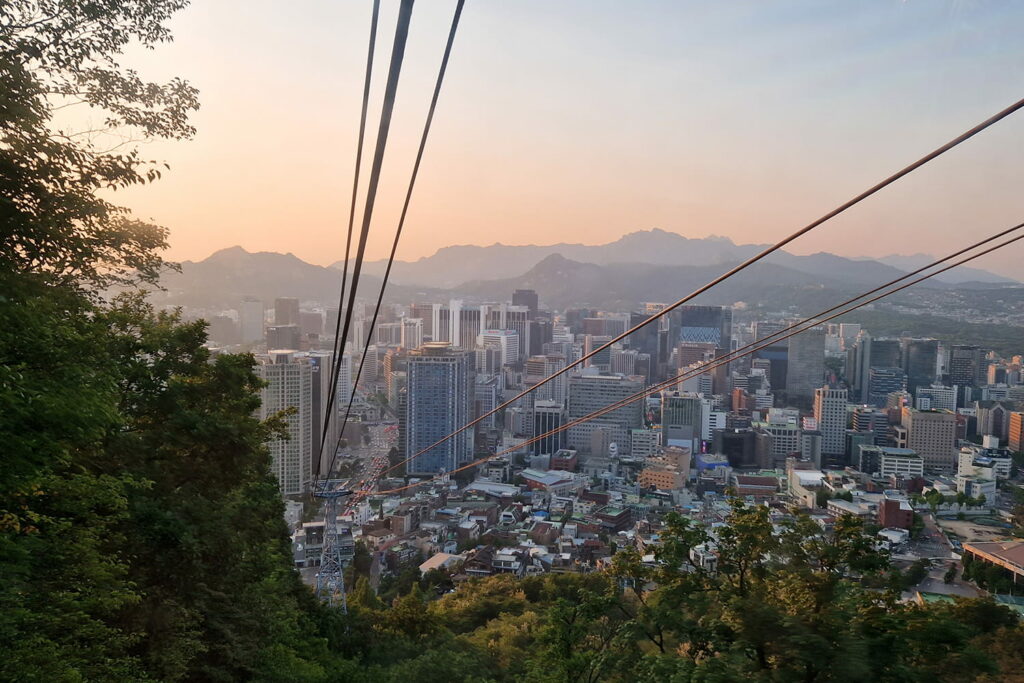
So far, we covered Seoul’s airports, transportation to and around Seoul as well as your accommodation. Now, let’s move on to a more fun topic: Sightseeing!
How many days are enough for Seoul?
This question is actually quite tricky to answer because Seoul is one of those cities where you could easily spend a week and still not have seen or done everything there is to do😆.
Seoul is home to numerous attractions, activities, areas and neighbourhoods that are quite distinct and all well worth a visit. Thereof, a lot are not necessarily located one next to the other. And that does not even include day trips from Seoul.
As such, we would advise you determine how much time to allocate to Seoul based on how tight of a schedule you have for your trip to South Korea in general:
- If you are short on time, we would still recommend to plan at least 3 full days in Seoul. That way you have time to cover the basics and see the main attractions of the city.
- If you have more time, then we would suggest staying 5 full days, therefore use one day for a day trip outside of Seoul.
What to see and do in Seoul
Now, whether you are staying 3 or 5 days, what is there to even do in Seoul? Honestly, quite a lot. From palaces to temples to hanok villages and observation decks, you are quite spoiled for choice when it comes to attractions and activities in Seoul!
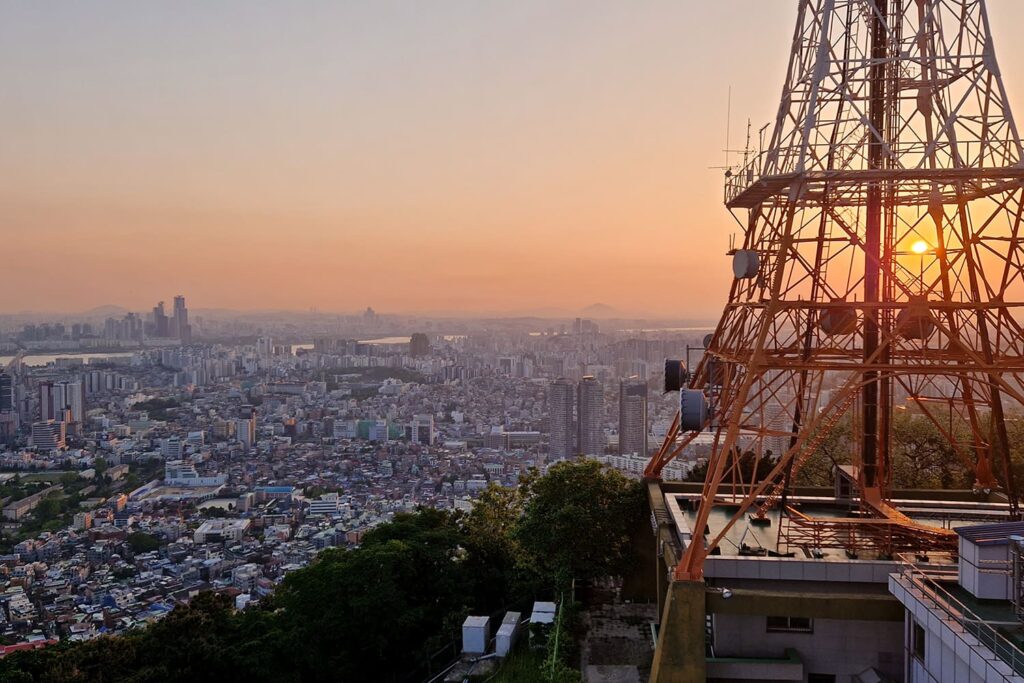
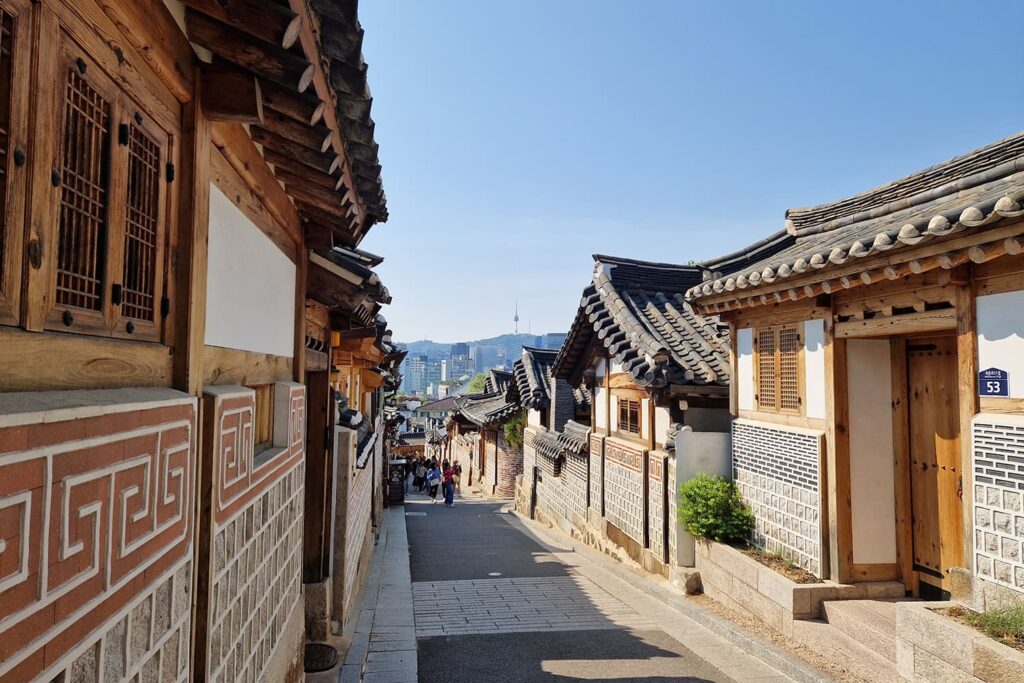
Down below, you’ll find an overview of more popular as well as a few lesser known things to see and do in Seoul. In other words, the perfect list to get some inspiration for your trip😉.
Best Things To See and Do in SEOUL
- Bukchon Hanok Village
- Ihwa Mural Village
- Ikseon-dong Hanok Village
- Gyeongbokgung Palace (the most famous one)
- Changdeokgung Palace (our favourite one) + Secret Garden
- Changgyeonggung Palace
- Deoksugung Palace
Note: more info on the Royal Palace Pass can be found in the next section!
- Gwanghwamun Square
- Dongdaemun Design Plaza (DDP)
- Gangnam Style Sculpture
- Starfield Library
- N Seoul Tower on Namsan Mountain. Get your tickets via Klook!*
- Lotte World Tower (the 6th tallest building in the world!) – Seoul Sky Observation Deck. Get your tickets via Klook!*
- Seoul City Wall Trail at Naksan Park
- Cheonggyecheon Stream
- Namsan Mountain
- Hangang Park (alongside the Han River)
- Lotte World Magic Island. Get your tickets via Klook!*
- Jongmyo Shrine (incl. in Royal Palace Pass)
- Jogyesa Temple (free entrance)
- Bongeunsa Temple (free entrance)
- Insa-dong (Culture Street)
- Itaewon
- Myeongdong (Night Market)
- Hongdae (Street Performances)
- Gangnam
- Korean National Museum (free entrance)
- War Museum of Korea (free entrance)
- Leeum Museum of Art (mostly for the architecture of the building)
- Museum Kimchikan (they offer a kimchi making class for 35.000KRW per person)
- Rent a Hanbok and get free access to Seoul’s palaces!
- Do a personal colour analysis to find out what colours truly match you! Book your Colour Analysis Session via GetYourGuide!*
- If you are into K-Pop: Book a K-Pop Dance Class via GetYourGuide!*
- Gwangjang Market Food Tour (i.e. the first permanent market in Korea!) Book a Gwangjang Food Tour via Klook!*
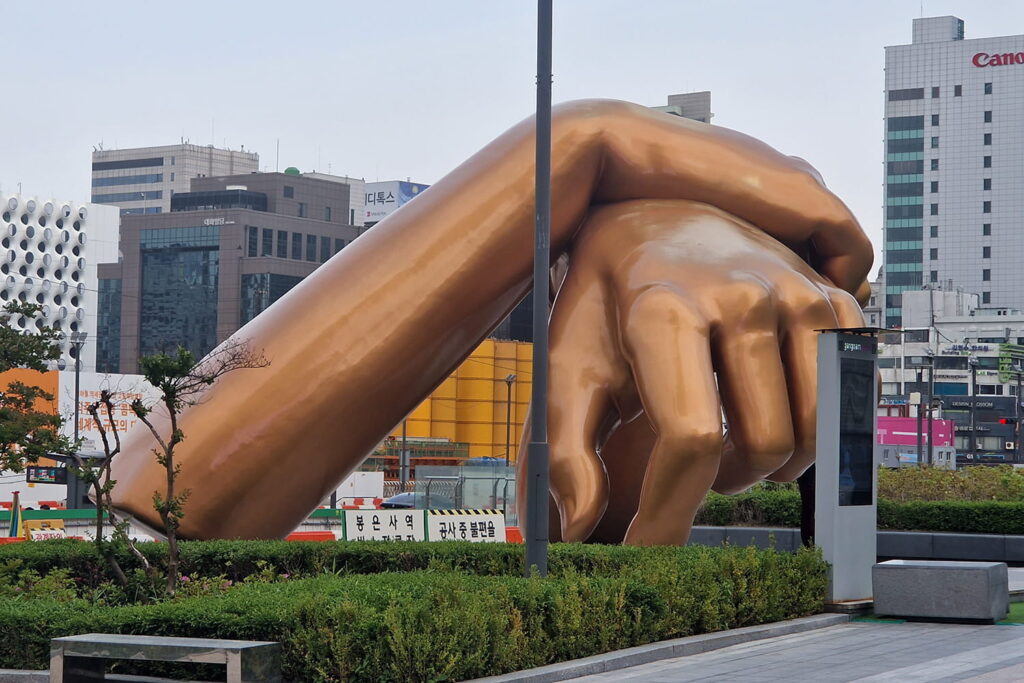
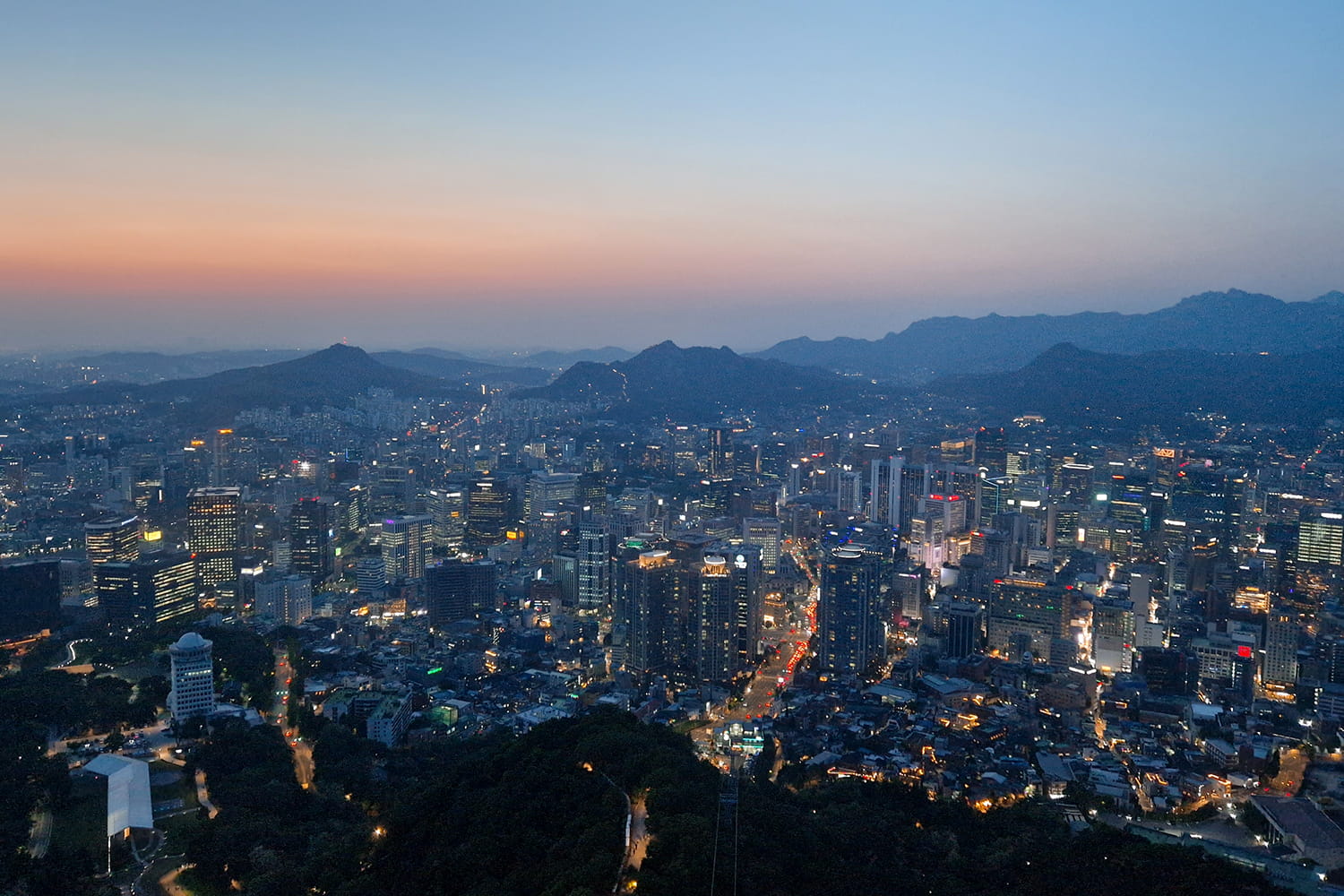
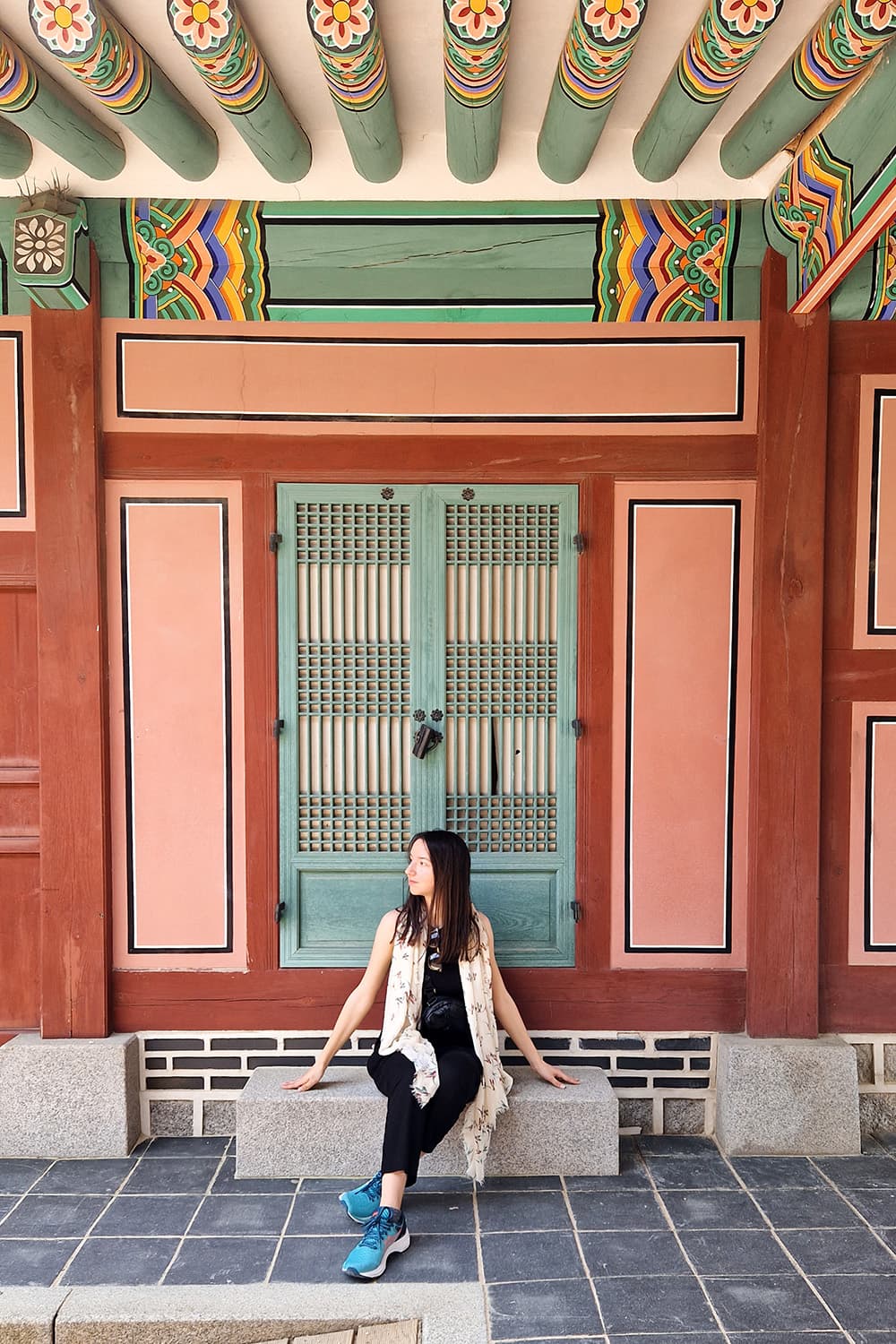
As you might have noticed, quite a lot of attractions in Seoul are actually free, which is pretty awesome, especially if you are travelling South Korea on a budget! We wrote a separate guide on all the free things to do in Seoul, where we go a little more in depth about each attraction, give you some more tips & suggestions and tell you exactly how to get there!
Not sure yet what to do in Seoul? Check out:
The Royal Palace Pass: What is it? And, is it worth it?
In our Seoul sightseeing list we mentioned the Royal Palace Pass a few times. In this section, we will now go over all the details related to the Royal Palace Pass you need to decide whether or not this pass is something you might be interested in! Let’s start!

- What exactly is the Royal Palace Pass? In short, the Royal Palace Pass is a combination ticket that allows you entrance to a few of Seoul’s most popular attractions, mostly palaces.
- How does it work? The Royal Palace Pass is essentially a small booklet containing one ticket for each attraction it allows you entrance to.
- Where can I use the Royal Palace Pass? It allows you entrance into Gyeongbokgung Palace, Changdeokgung Palace + the Secret Garden (Note: Entrance to the Secret Garden is managed via time slots, which is why you’ll need to exchange your voucher for an actual ticket to enter the Secret Garden at the Changdeokgung Palace ticket office), Changgyeonggung Palace, Deoksugung Palace as well as Jongmyo Shrine.
- Where can I get the Royal Palace Pass? Each of the above mentioned attractions will have a ticket booth where you can acquire single entry tickets as well as the Royal Palace Pass. You can simply buy it at the first site you are visiting.

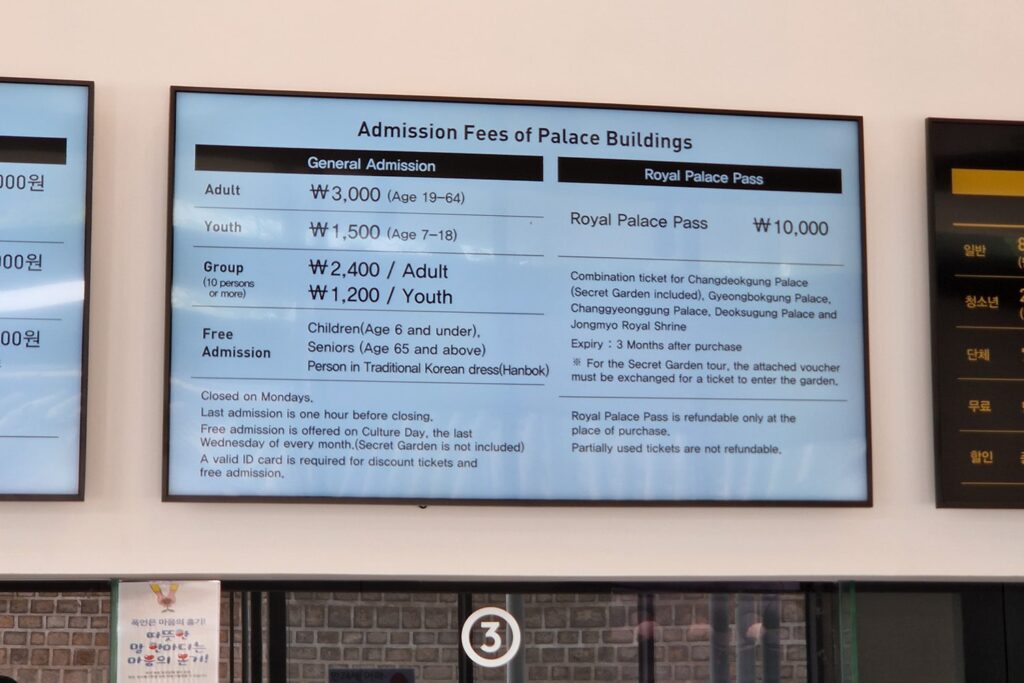
Our tip: Personally we bought the pass at the Changdeokgung Palace ticket booth, which is convenient since you can get the Royal Palace Pass and your entry ticket to the Secret Garden in one go!
- How much does it cost? Overall the Royal Palace Pass will cost you 10.000 KRW (~6,70€/7$).
- How much money will it save me? If you were to pay for entrance to each palace individually, it would look somewhat like this: Gyeongbokgung Palace: 3.000 KRW; Changdeokgung Palace: 3.000 KRW + an additional 5.000 KRW for the Secret Garden; Changgyeonggung Palace: 1.000 KRW; Deoksugung Palace: 1.000 KRW and Jongmyo Shrine: 1.000 KRW.
- So, is the Royal Palace Pass worth it? We visited all attractions included in the pass and our personal highlights were Gyeongbokgung Palace, Changdeokgung Palace + the Secret Garden as well as Changgyeonggung Palace. If you were to only visit those, then you already saved money by buying the Royal Palace Pass + you don’t have to line up to buy tickets individually each time😉. As such, yes, we think that getting the Royal Palace Pass is worth it.
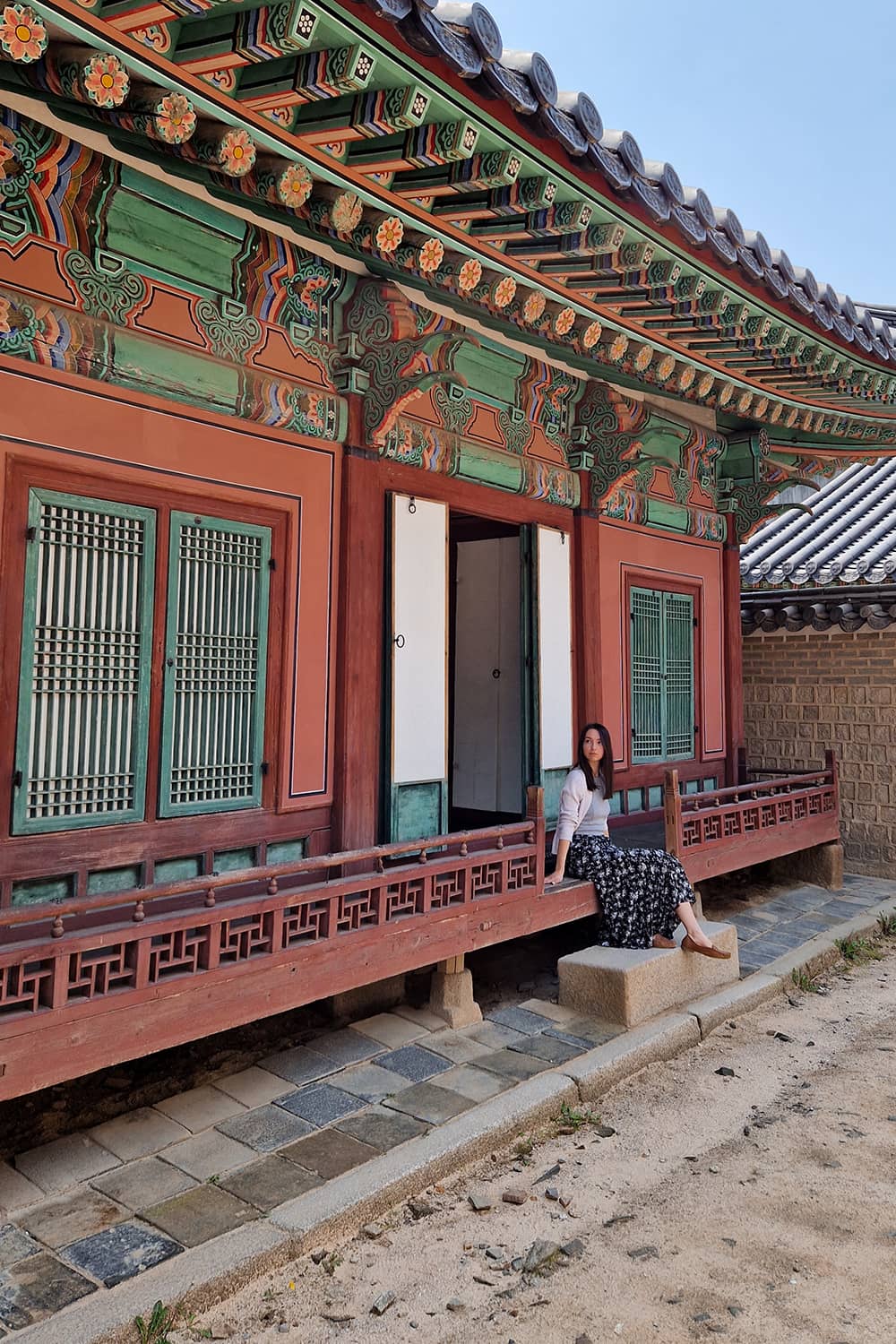
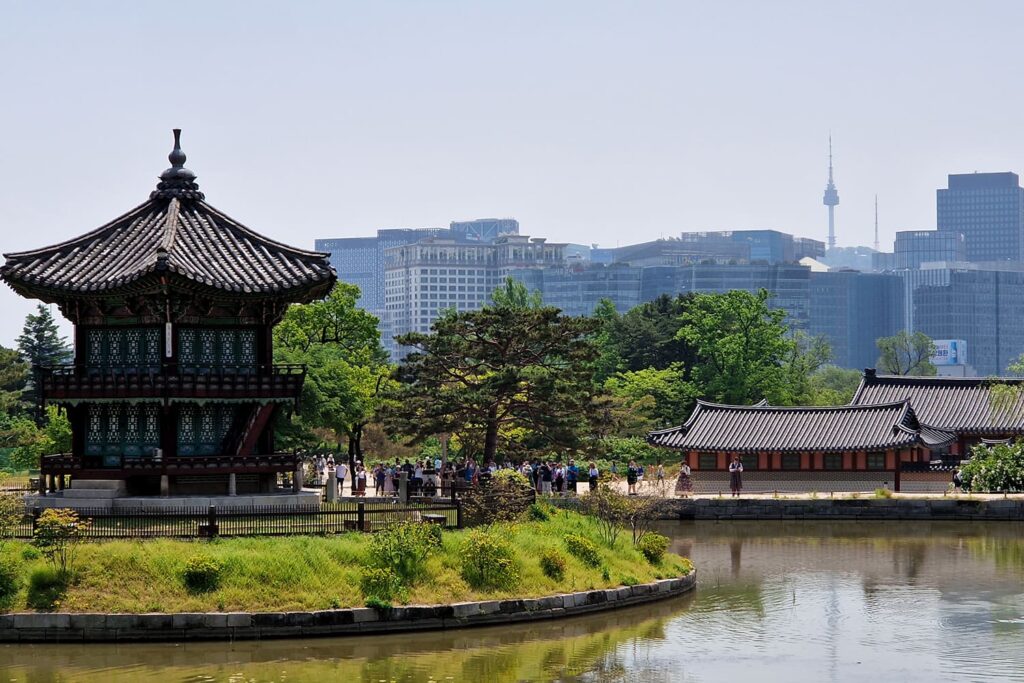
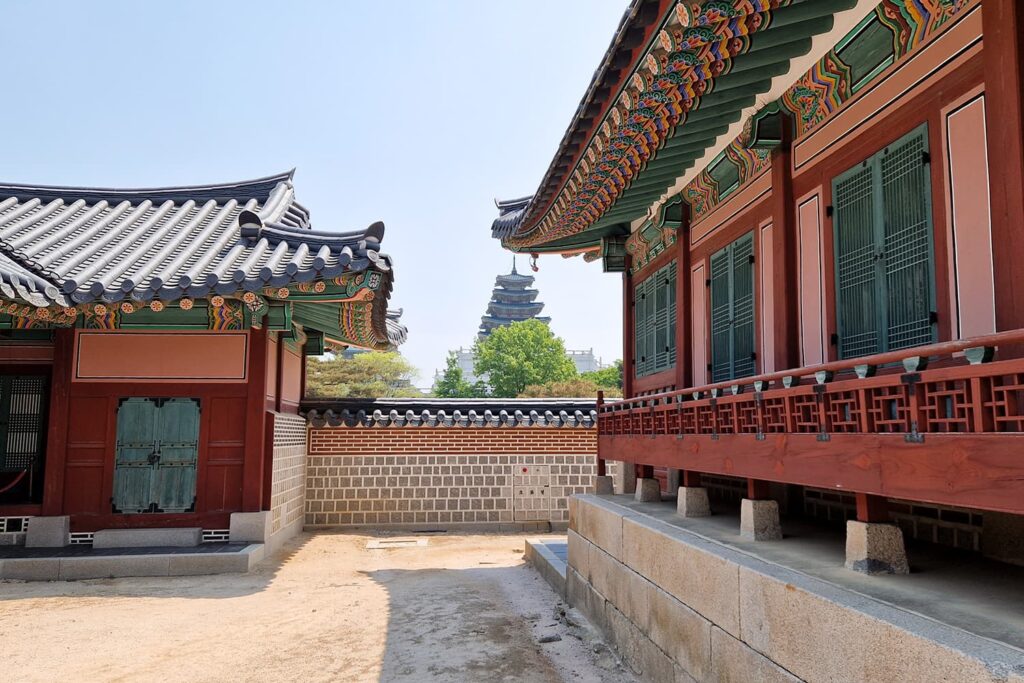
Best day trips from Seoul
Seoul is the perfect base for a number of day trips. Down below we tell you about what are probably the three most popular day trips among foreign tourists when in Seoul!
1. Book a tour to the DMZ
I am sure that no one is surprised the DMZ made this list😆. DMZ stands short for Demilitarised Zone and designates the border barrier between North and South Korea. A trip to the DMZ is probably the most popular day trip from Seoul and a MUST for everyone interested in learning more about the Korean War and its consequences.
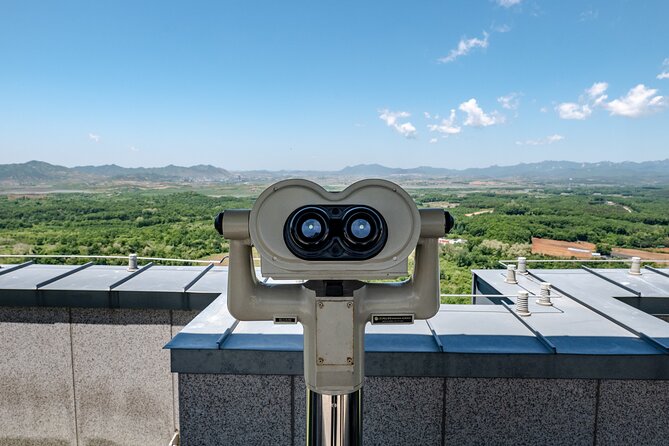
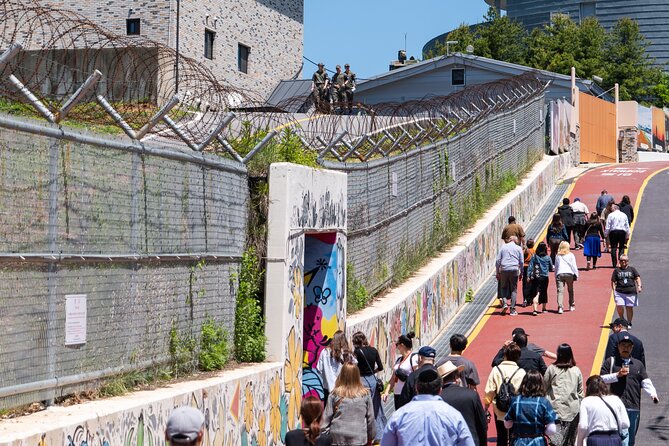
If a day trip to the DMZ is something you want to do, know that you need to book a tour. Individual visits to the DMZ are not permitted. Also, it is probably advised to book your tour at least a few days in advance. Typically, tours are either half-day or full-day depending on their itinerary.
2. Explore Nami Island
Nami Island is quite a popular day trip spot among South Koreans. The latter is a half-moon shaped island in the middle of a river and most well known for its beautiful tree alley and photo spots. Part of its popularity also comes from features in various K-Drama.
If you decide to come here, do know that it is quite a touristy spot and depending on when you visit, it might be packed. Personally, we have not visited Nami Island yet, since our last South Korea trip was in May/June and apparently Nami Island is most stunning in autumn!
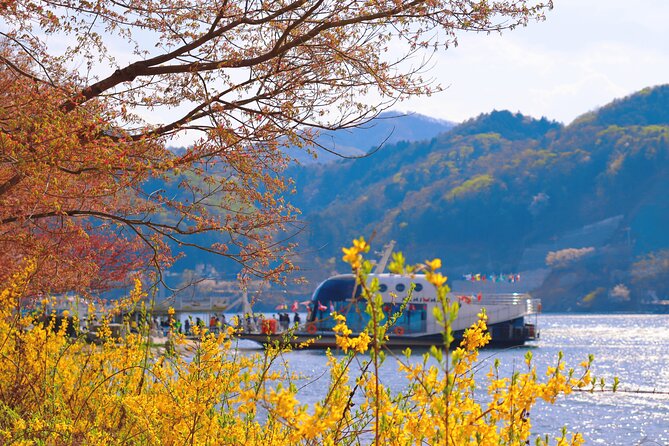
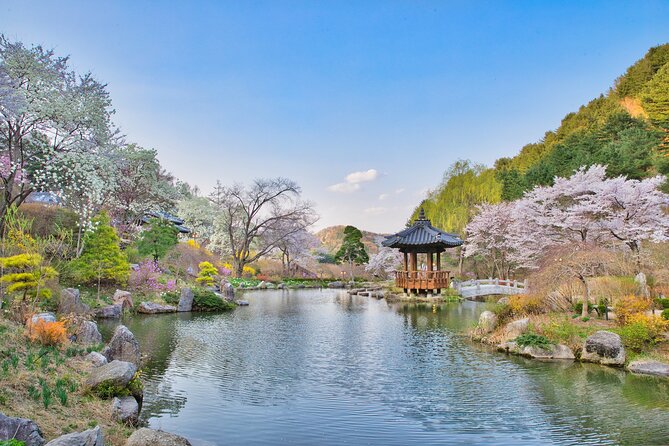
How to get to Nami Island from Seoul
- Take the ITX-Cheongchun from Yongsan Station in Seoul until you reach Gapyeong Station. From here a quick bus ride will take you to the ferry to get to Nami Island. Travel time: between 1h30 – 2h.
- Or, book a tour to visit Nami Island. Typically a tour will also include a visit to the Garden of Morning Calm.
3. Go Hiking in Bukhansan National Park
If you like to be a little more active, we recommend to go for a hike in Bukhansan National Park! The latter is located north of Seoul and is therefore a great way to escape the city without having to travel very far.
Bukhansan National Park is famous for its hikes that wind through stunning mountains and rock formations while at the same time providing awesome views over Seoul!
How to get to Bukhansan National Park
There are several entrances to Bukhansan NP. Which one is best will depend on the hike you choose. You can access Bukhansan NP via local bus or even subway, again, depending on the hike you choose.
Seoul – A hub that connects all of South Korea
Before we reach the end of this post, there is one more thing we wanted to touch upon. And that is the way in which the city of Seoul links to all manner of destinations within South Korea. So, if you plan on visiting more than just Seoul, then you may want to stick around for a little while longer.
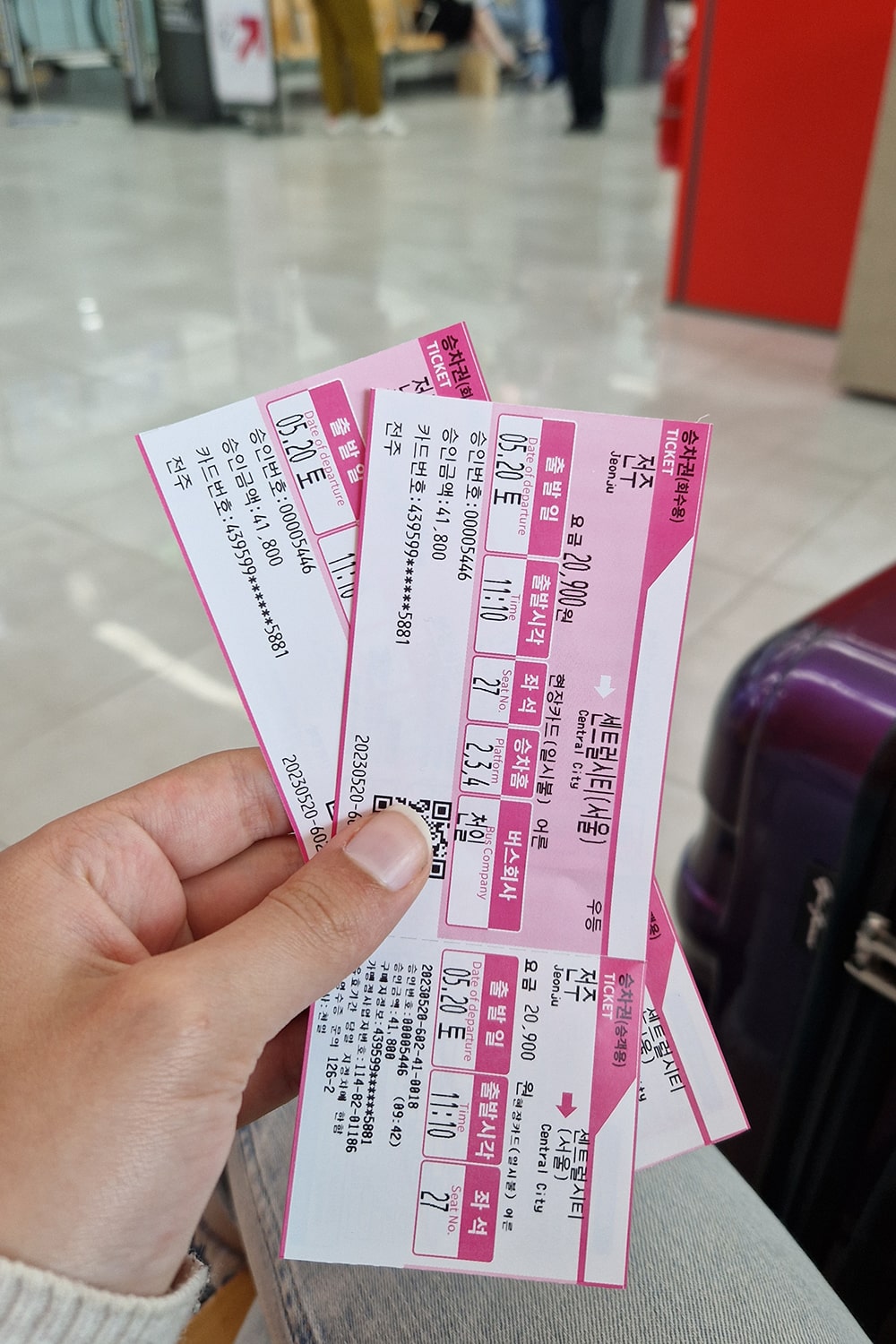
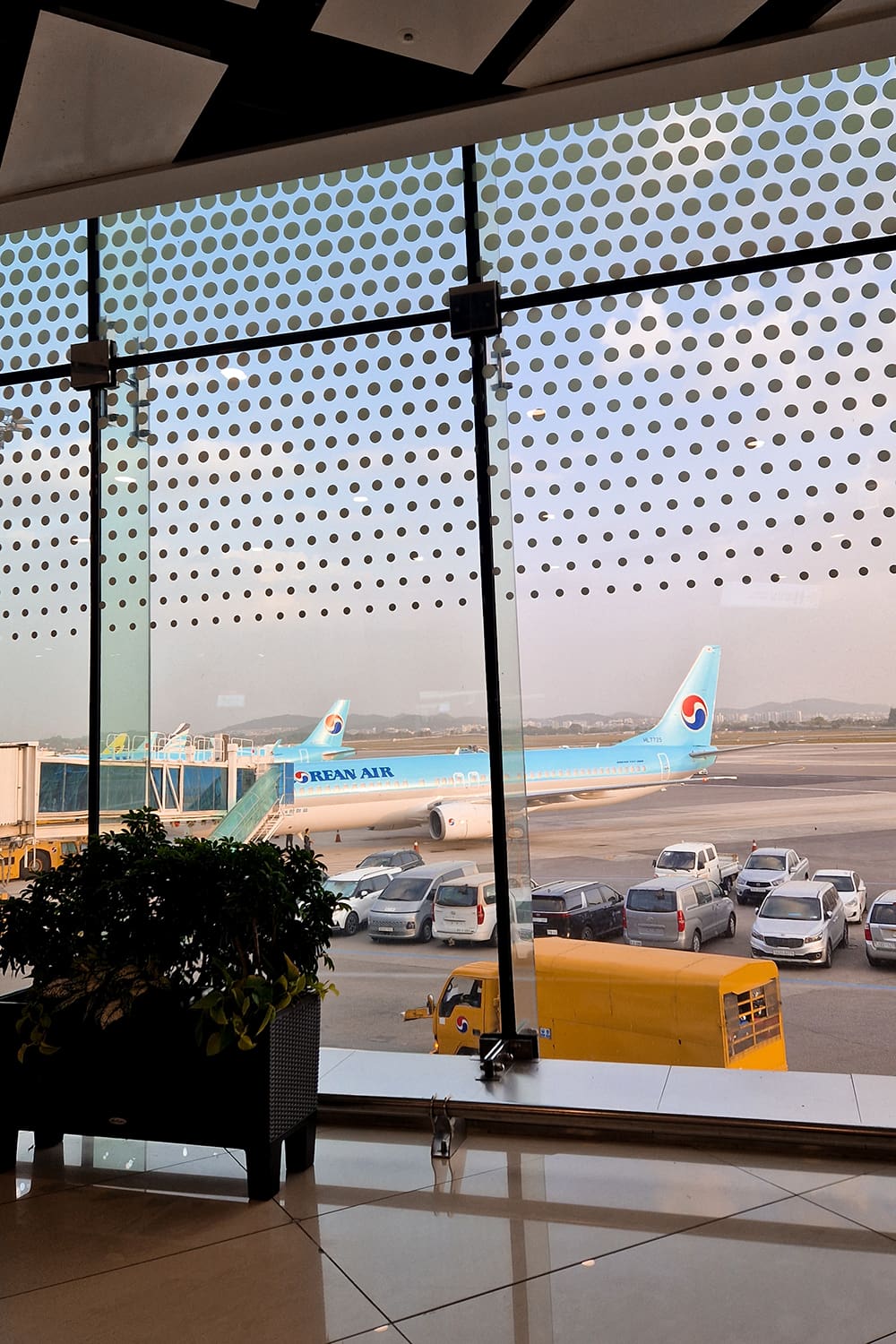
Seoul is the main travel hub that connects a lot of destinations within South Korea. In case you have heard the expression ‘All roads lead to Rome’ before, well, in South Korea all roads lead to Seoul. Whether you are travelling by train, bus or plane, most destinations have at least one direct connection to Seoul.
🚌 Travel Onward by Bus.
One of the best ways to travel South Korea is by bus. As such, the country is home to quite an extensive Express and Intercity bus system that connects Seoul to a great number of destinations.
For tourists, the Gyeongbu as well as the Honam Line Bus Terminals are probably the most relevant Express Bus Terminals in Seoul. Both are located right next to each other and can be reached via the ‘Express Bus Terminal’ Metro Station, which is serviced by Seoul’s Metro Line 3, 7 and 9.
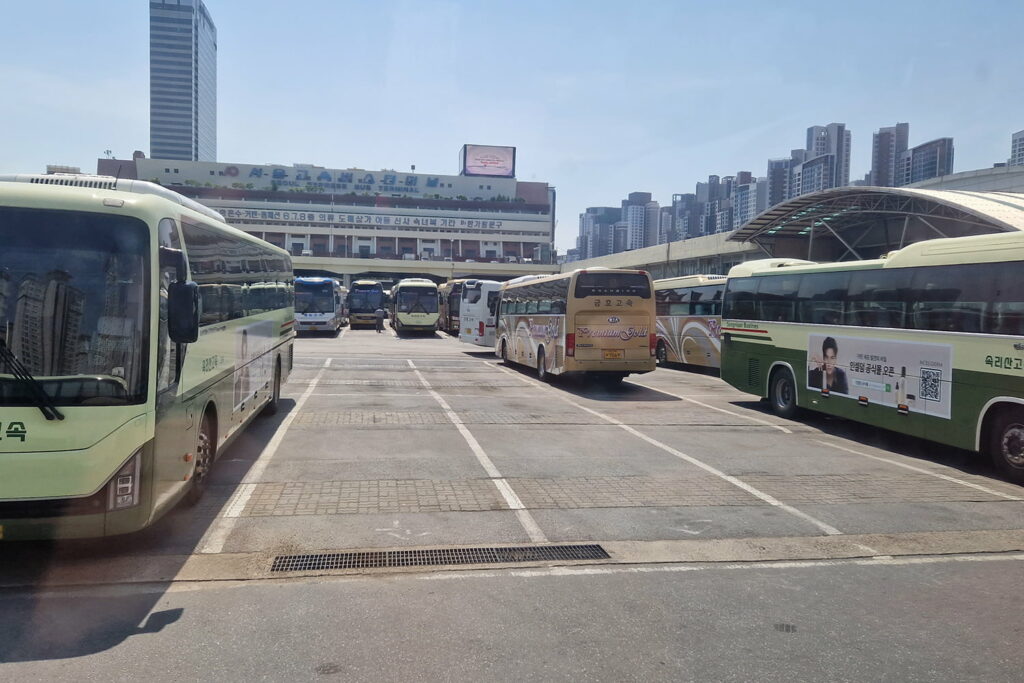
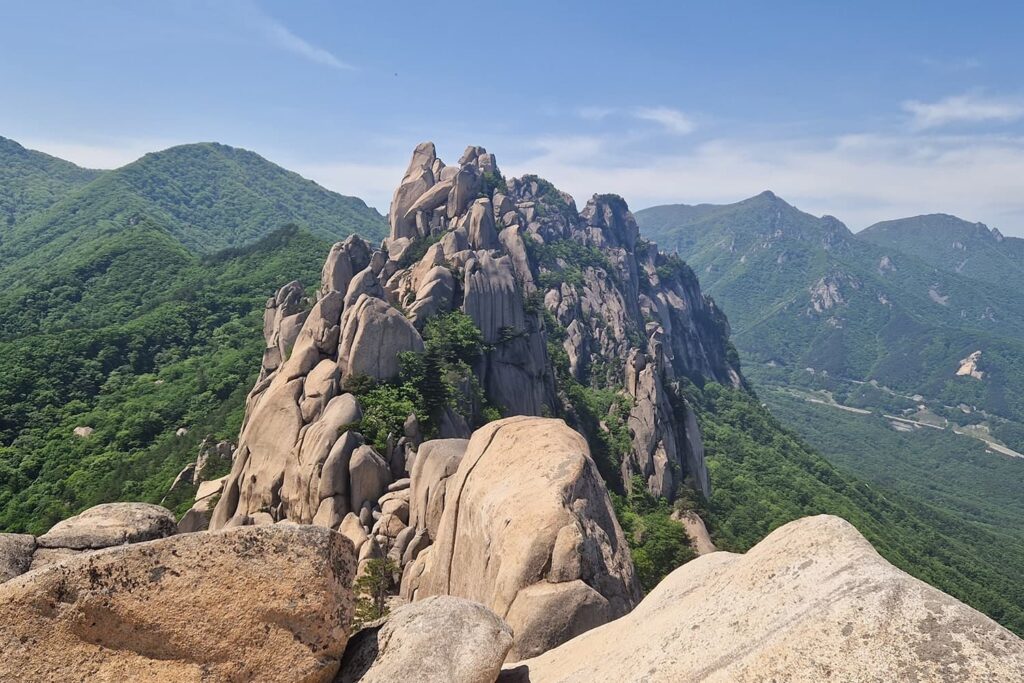
So, where can you get to via Express Bus from Seoul?
- Sokcho. Most well-known as the gateway to stunning Seoraksan National Park! A must for everyone who loves hiking or is looking for a lovely beach weekend getaway! Read more about the best things to do in Sokcho.
- Jeonju. Home to a stunning Hanok Village and birthplace of South Korea’s most popular dish: bibimbap! Perfect for those that wish to get a glimpse into what South Korea’s past might have looked like. Find out how you can spend two amazing days in Jeonju Hanok Village!
- Andong. Known as South Korea’s centre for folk traditions and culture. It is home to one of the more authentic Folk Villages.
Looking for more information on how to use South Korea’s Express Bus System? Read next
🚅 Travel Onward by Train.
A very popular way to travel around South Korea is by train, more specifically by KTX (South Korea’s high-speed train). While it is a tat more expensive than bus travel, it is probably the fastest way to get places.
In Seoul, the main train station is Seoul Station. Most KTX will start and/or end their journey here. The closest metro station, also called ‘Seoul Station’ can be reached via the Seoul Metro Line 1 & 4.
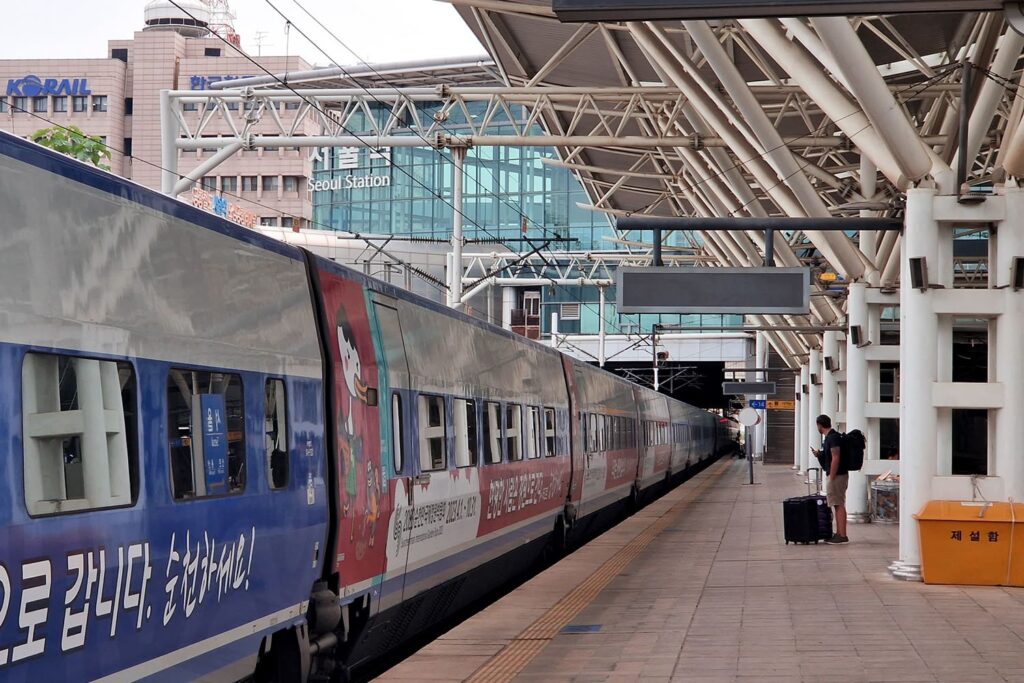
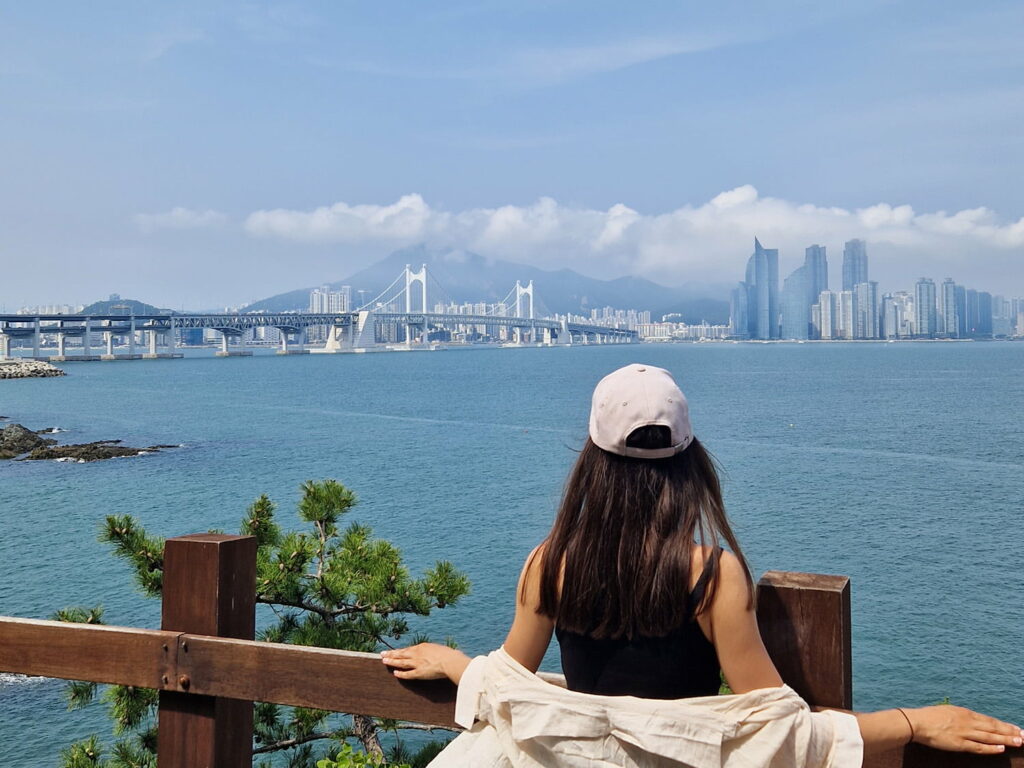
So, where can you get to via KTX from Seoul?
- Busan. South Korea’s second largest city. Busan is a seaside city and therefore quite different from Seoul. Personally, Busan was our favourite out of the two (even though we agree that Seoul has more things to do😉) and we highly recommend visiting Busan! Find out how you can spend 3-4 epic days in Busan!
- Jeonju. Home to a lovely Hanok Village and birthplace of South Korea’s most popular dish: bibimbap! Perfect for those that wish to get a glimpse into what South Korea’s past might have looked like. Most remnants in Jeonju date back to the Joseon Dynasty. Find out how you can spend two amazing days in Jeonju Hanok Village!
- Gyeongju. A city of considerable historical importance. Gyeongju holds remnants dating as far back as the Silla Dynasty! Surrounded by stunning rice fields and mountains, Gyeongju is also home to Bulguksa Temple, one of the most magnificent temples in all of Korea! Find out how to spend 2 awesome days in Gyeongju!
Looking for more information on South Korea’s KTX? Read next
✈️ Travel Onward by Plane.
Last but not least, there are a great number of local flights that operate between various South Korean cities. Truthfully, the only instance where we would recommend flying within South Korea is if Jeju Island is part of your South Korea Itinerary.
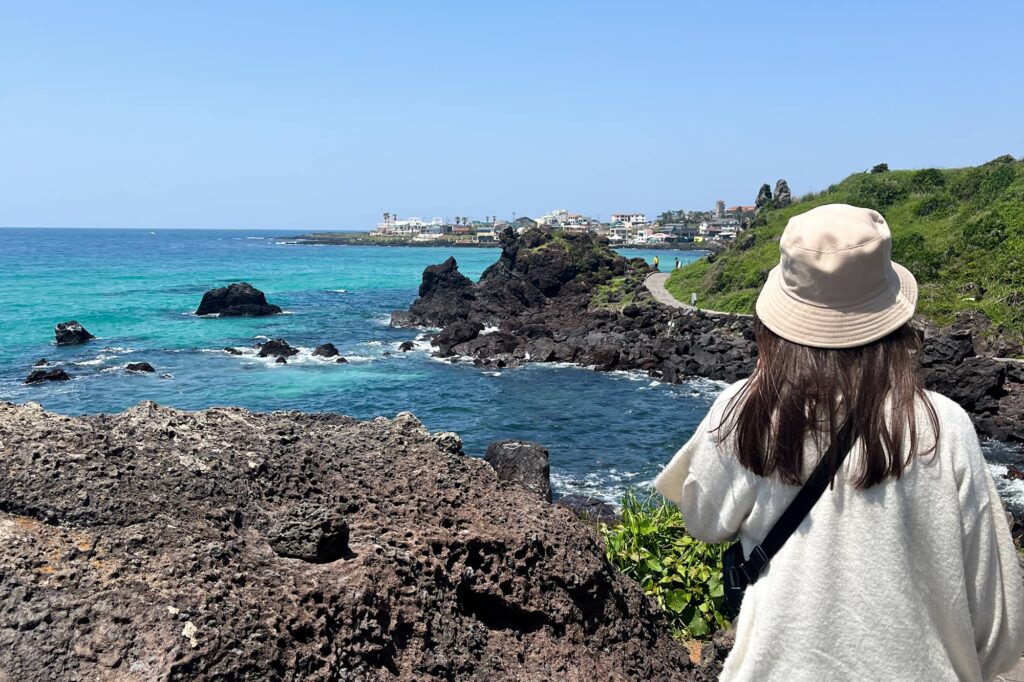
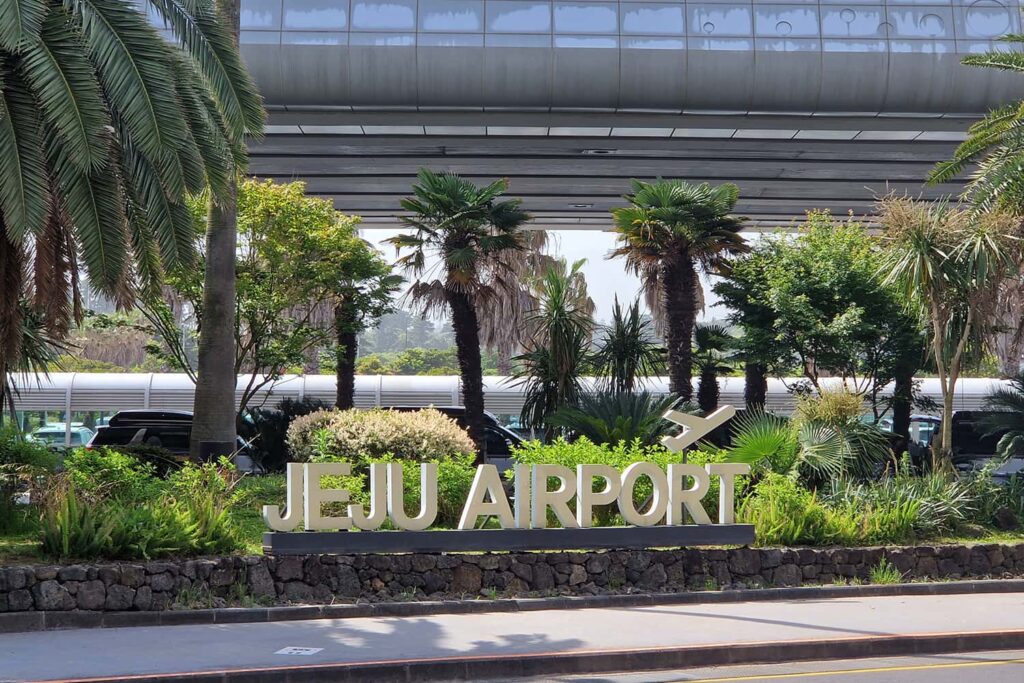
Domestic flights are likely going to leave from Seoul’s Gimpo Airport (GMP). Since Seoul’s airports where quite an in-depth subject at the beginning of this post we won’t delve deeper into that topic here again😉.
Wondering what your South Korea Itinerary with a stop-over on Jeju Island could look like? Check out:
Complete Travel Guide to Seoul: Final Thoughts
And this concludes our complete travel guide to Seoul! We went over a number of planning detail relevant for any trip to Seoul, be it a city trip or the start of a more in-depth South Korea adventure – from Seoul’s airports to transportation around the city and beyond, sightseeing, where to stay and more!
We hope you found this travel guide helpful, and as always, if there are any topics we did not cover or questions that remain unanswered, do not hesitate to leave them in the comments down below! Save this post for later if your trip isn’t for another while!
We wish you safe and happy travels!🍀
